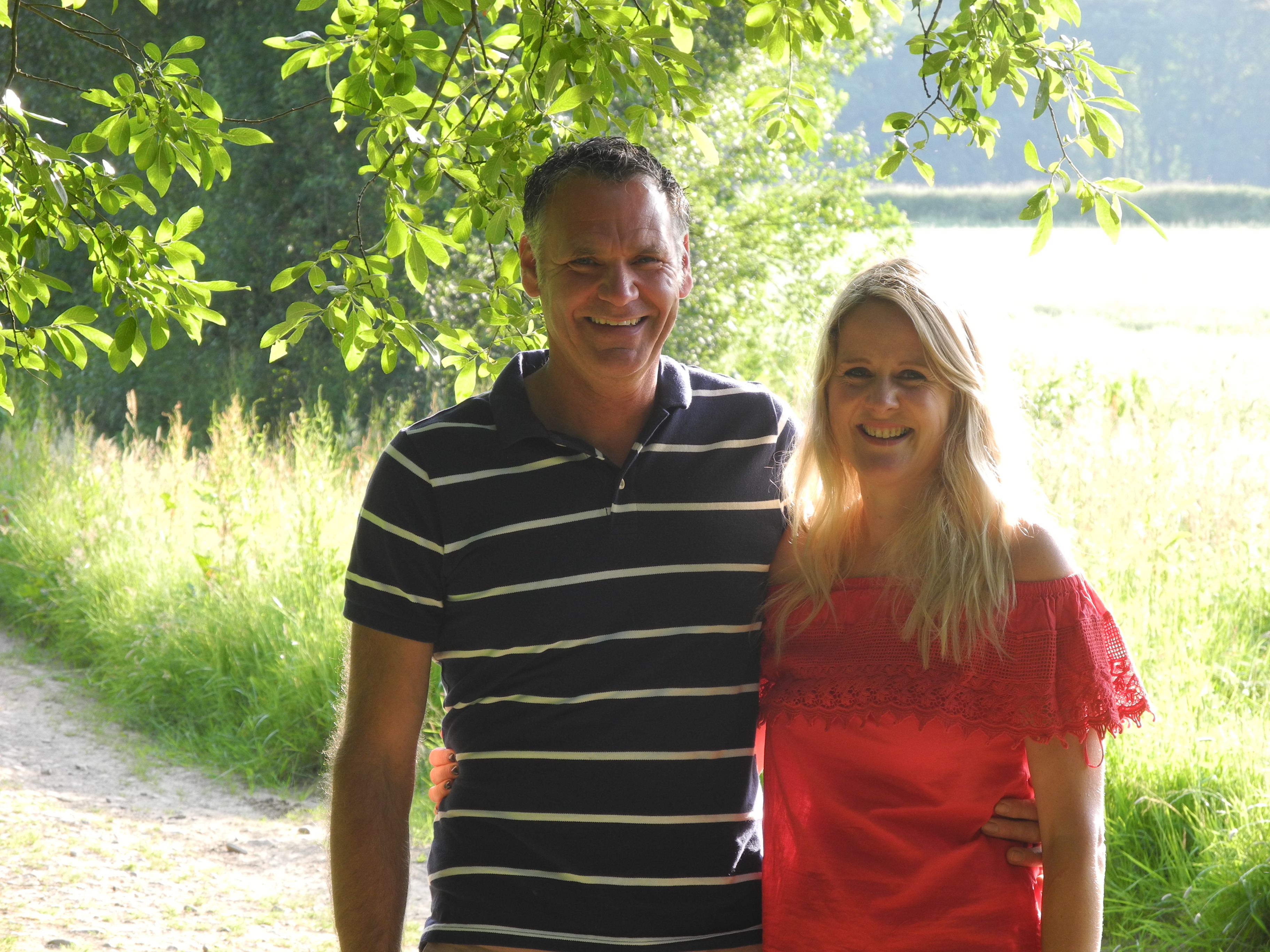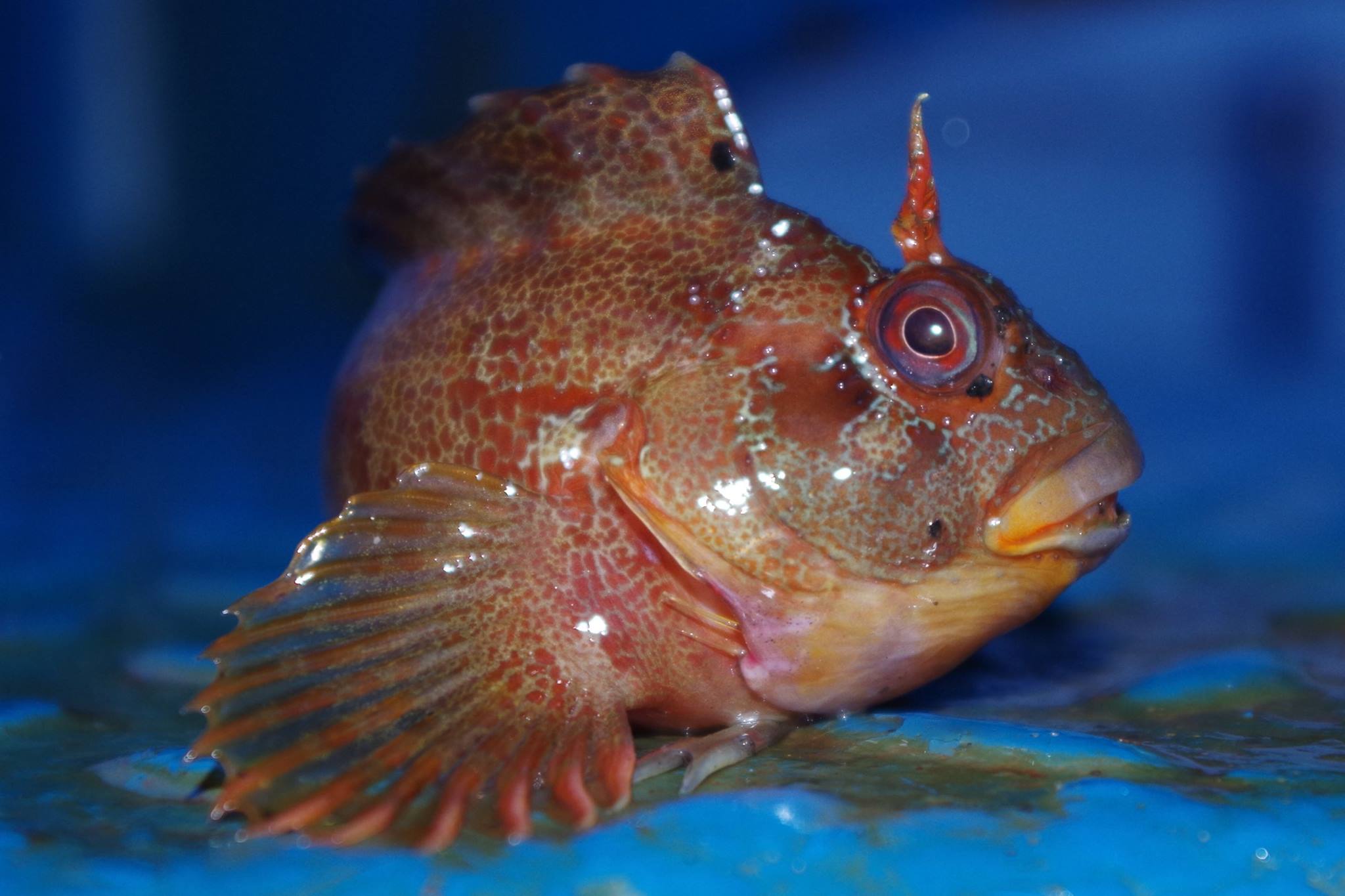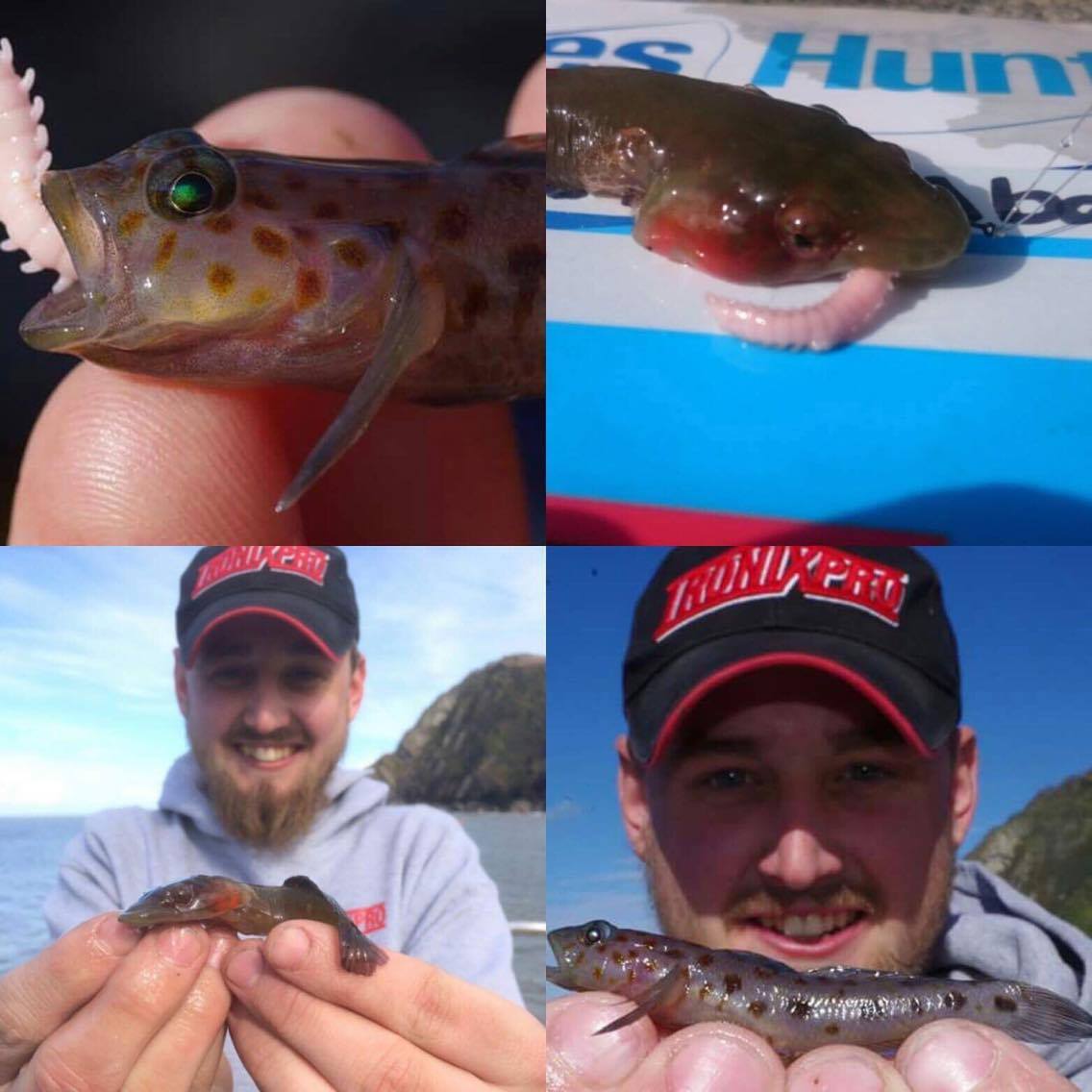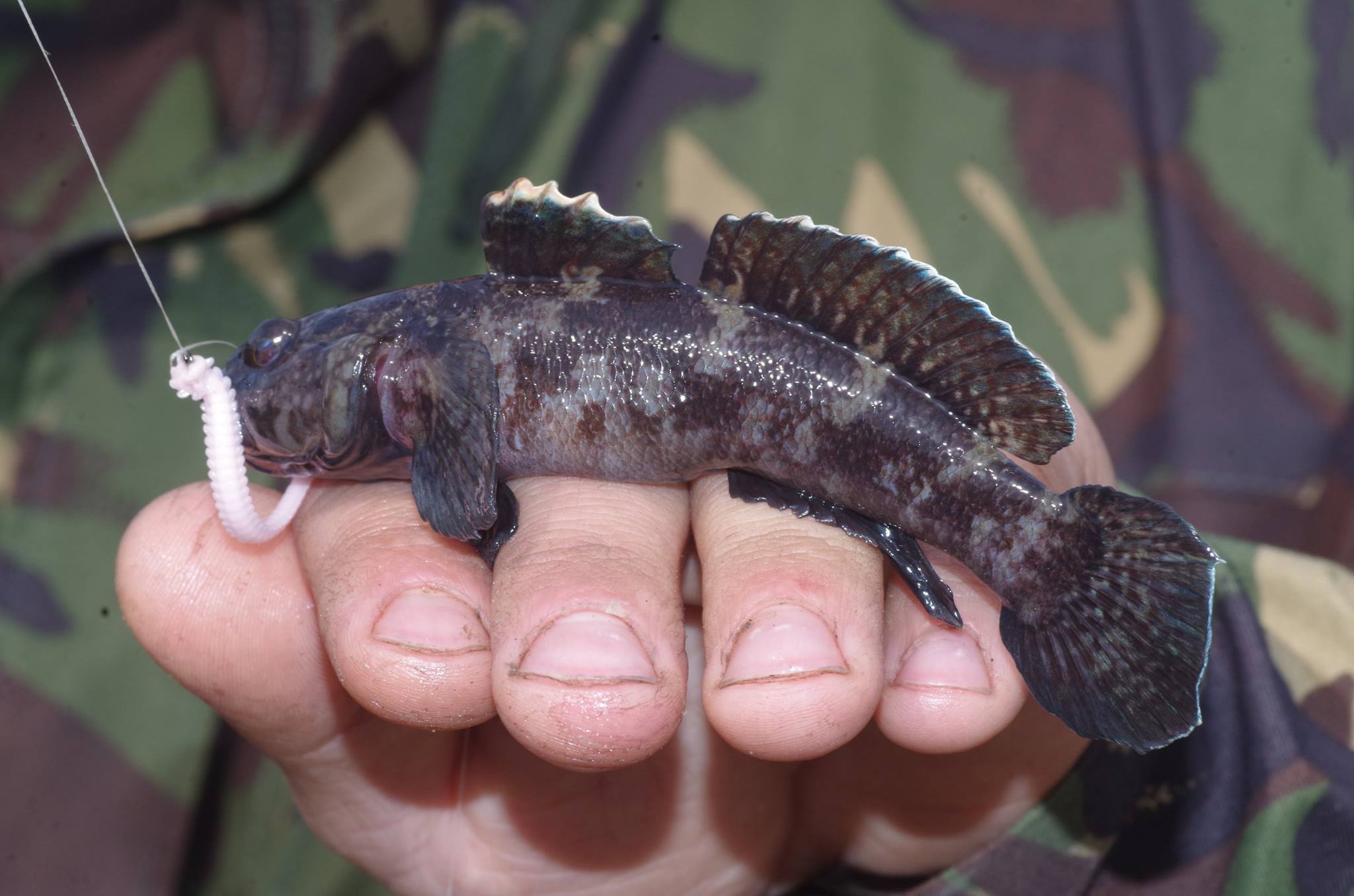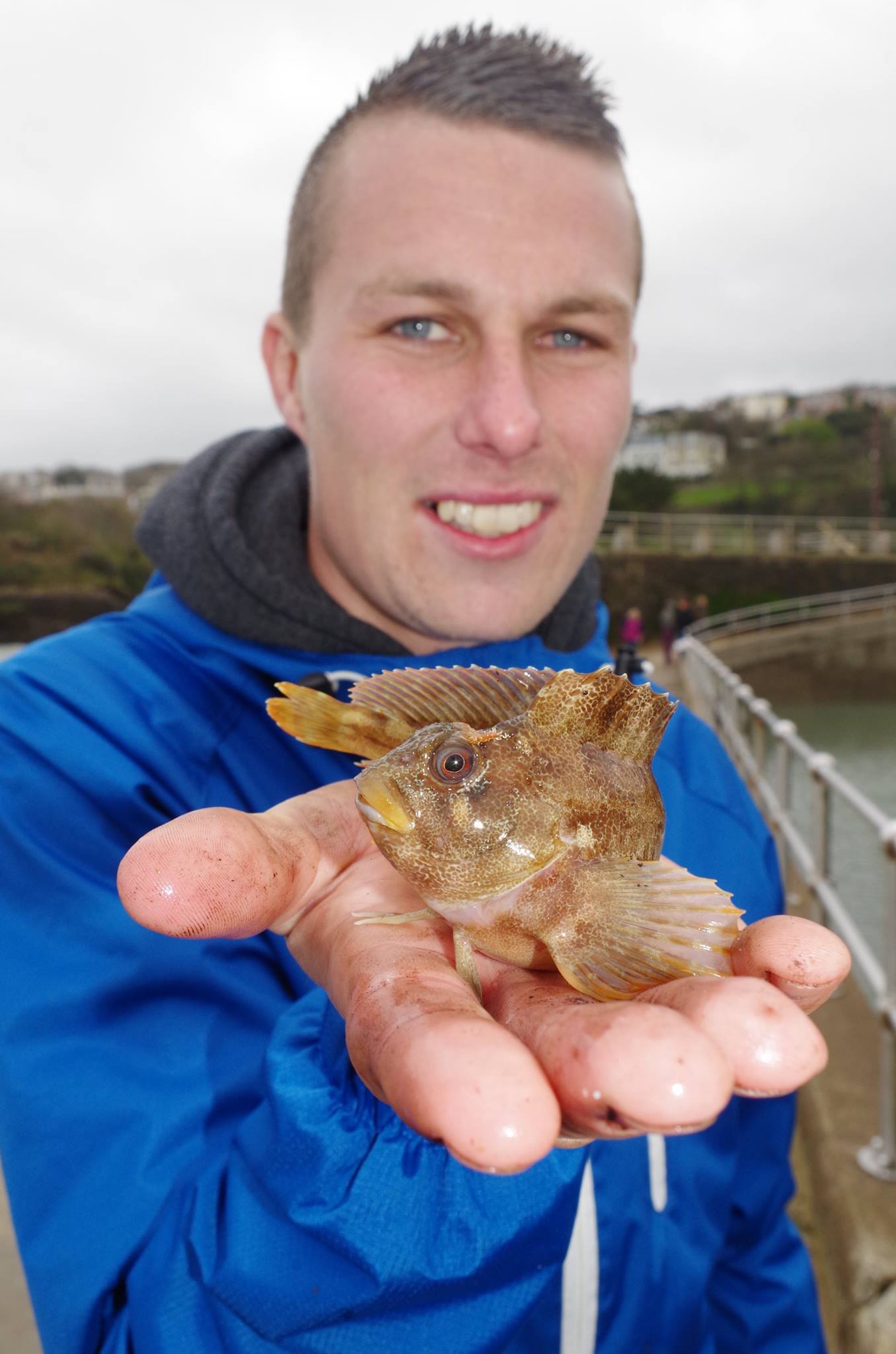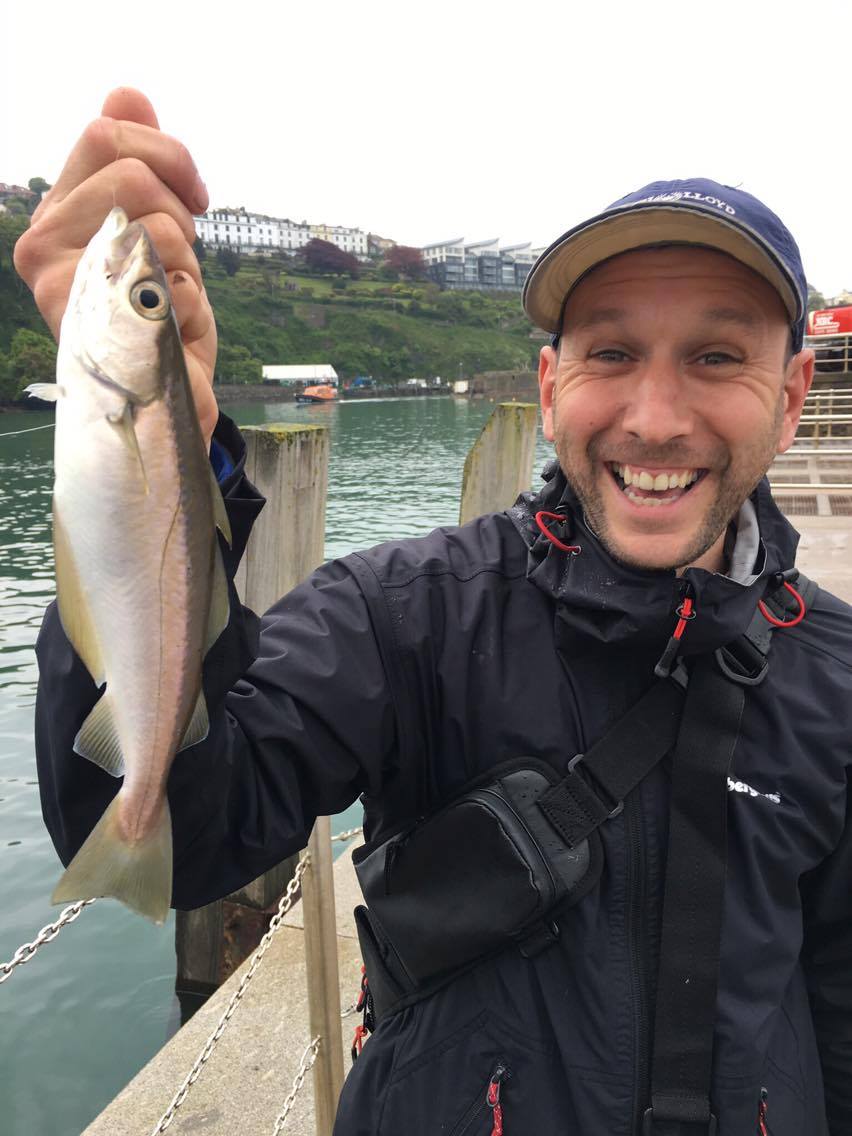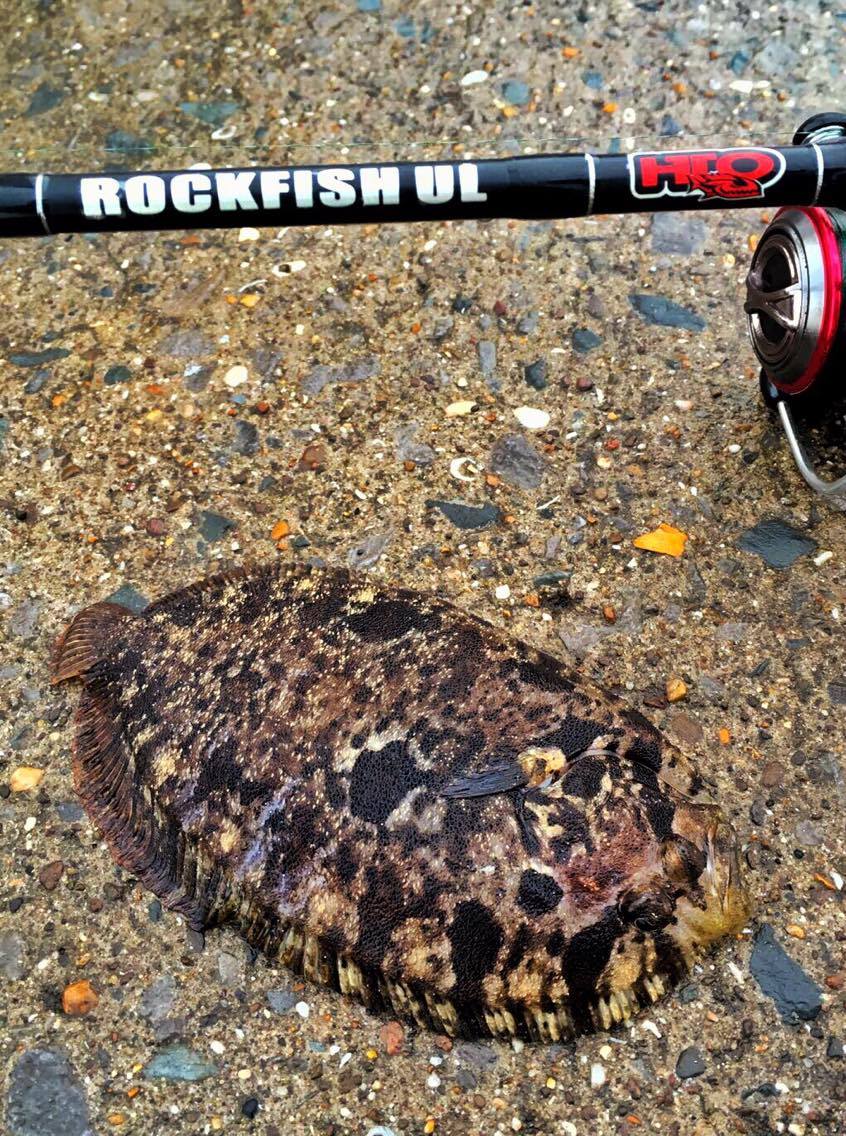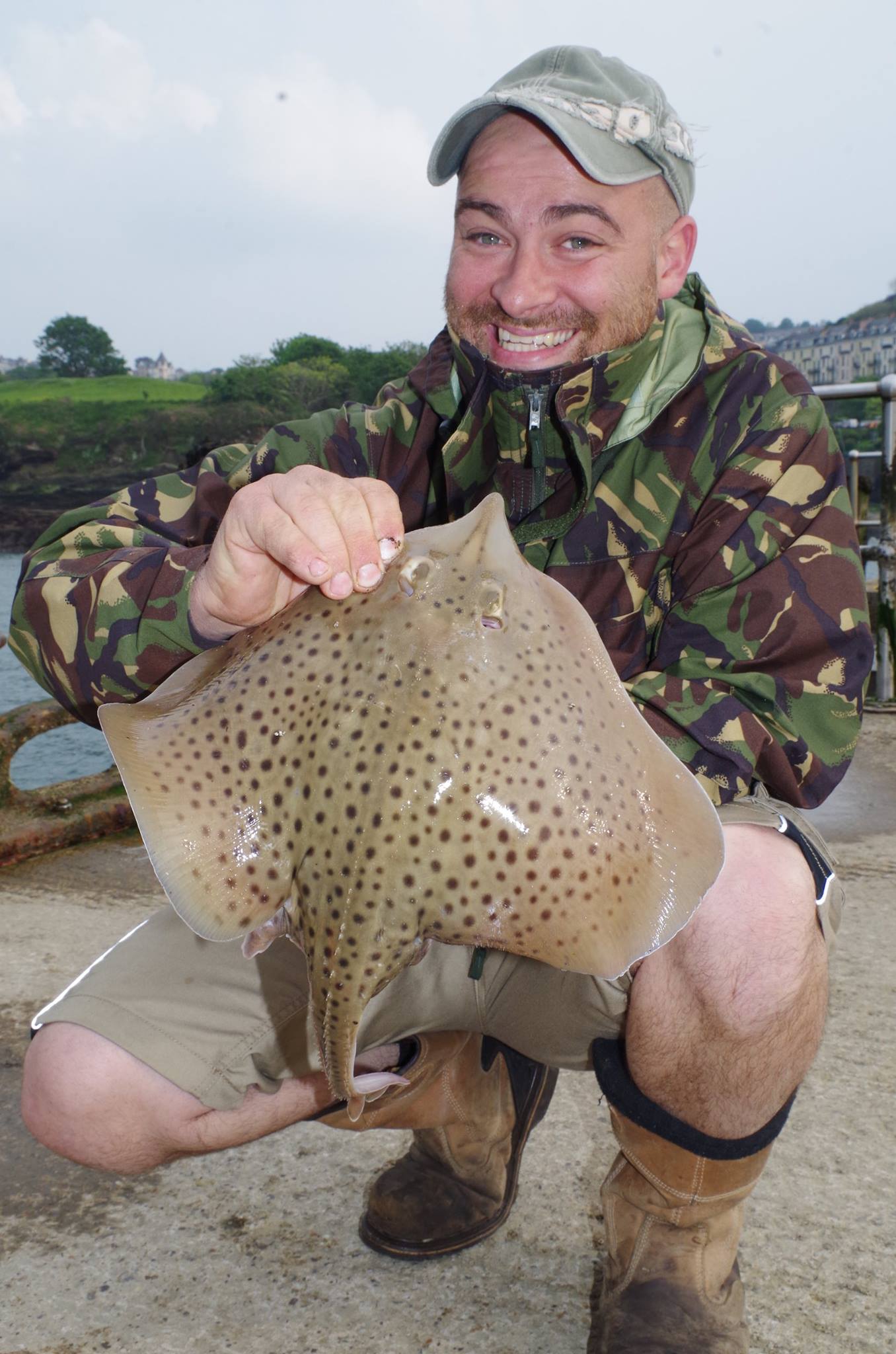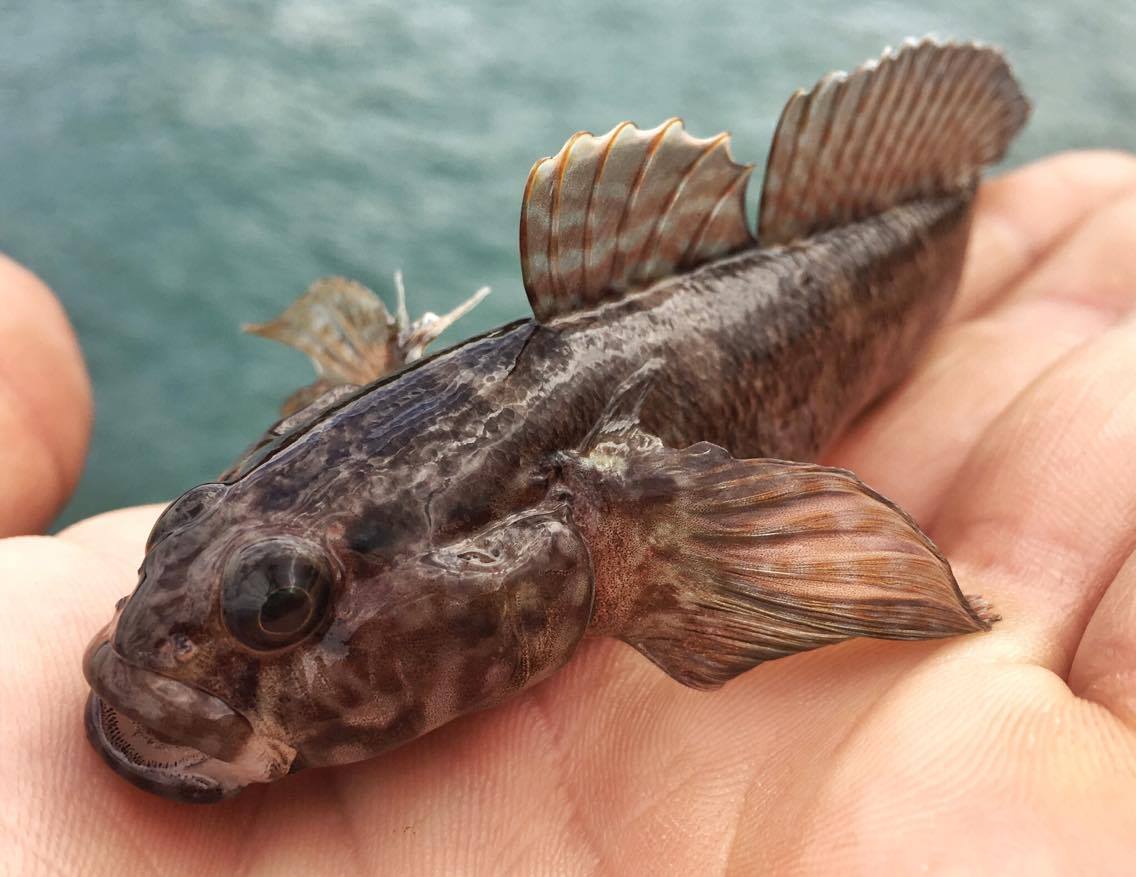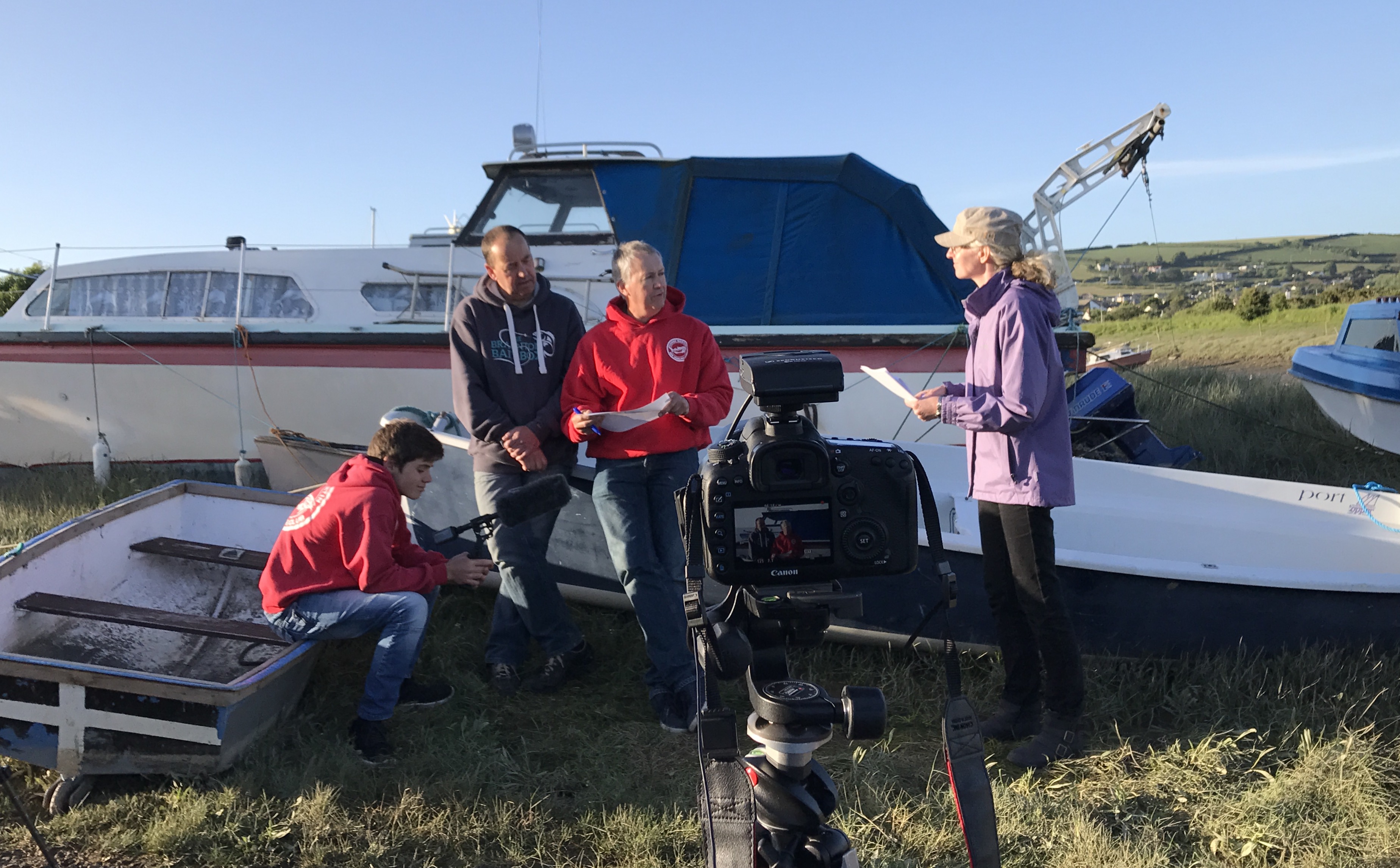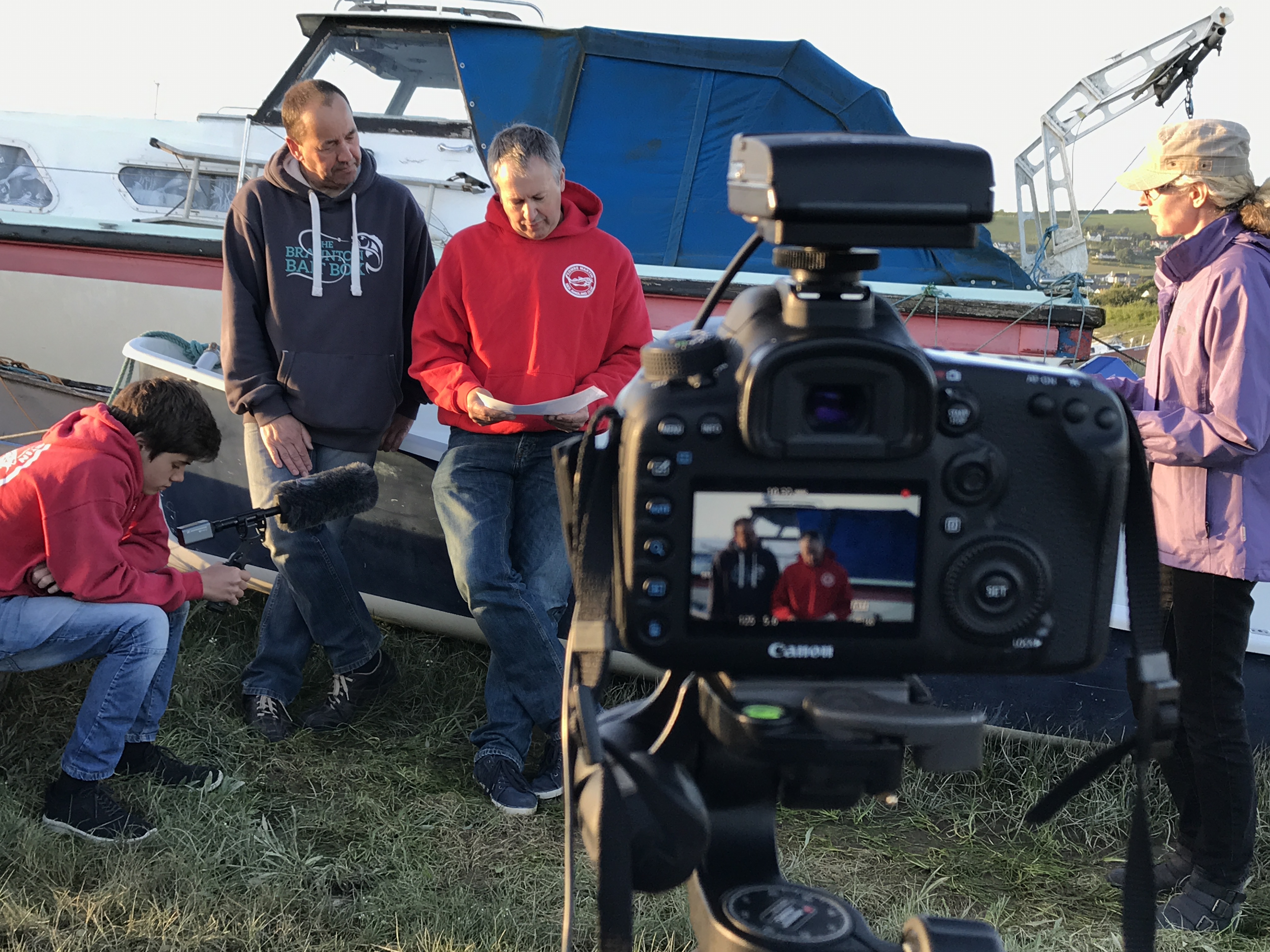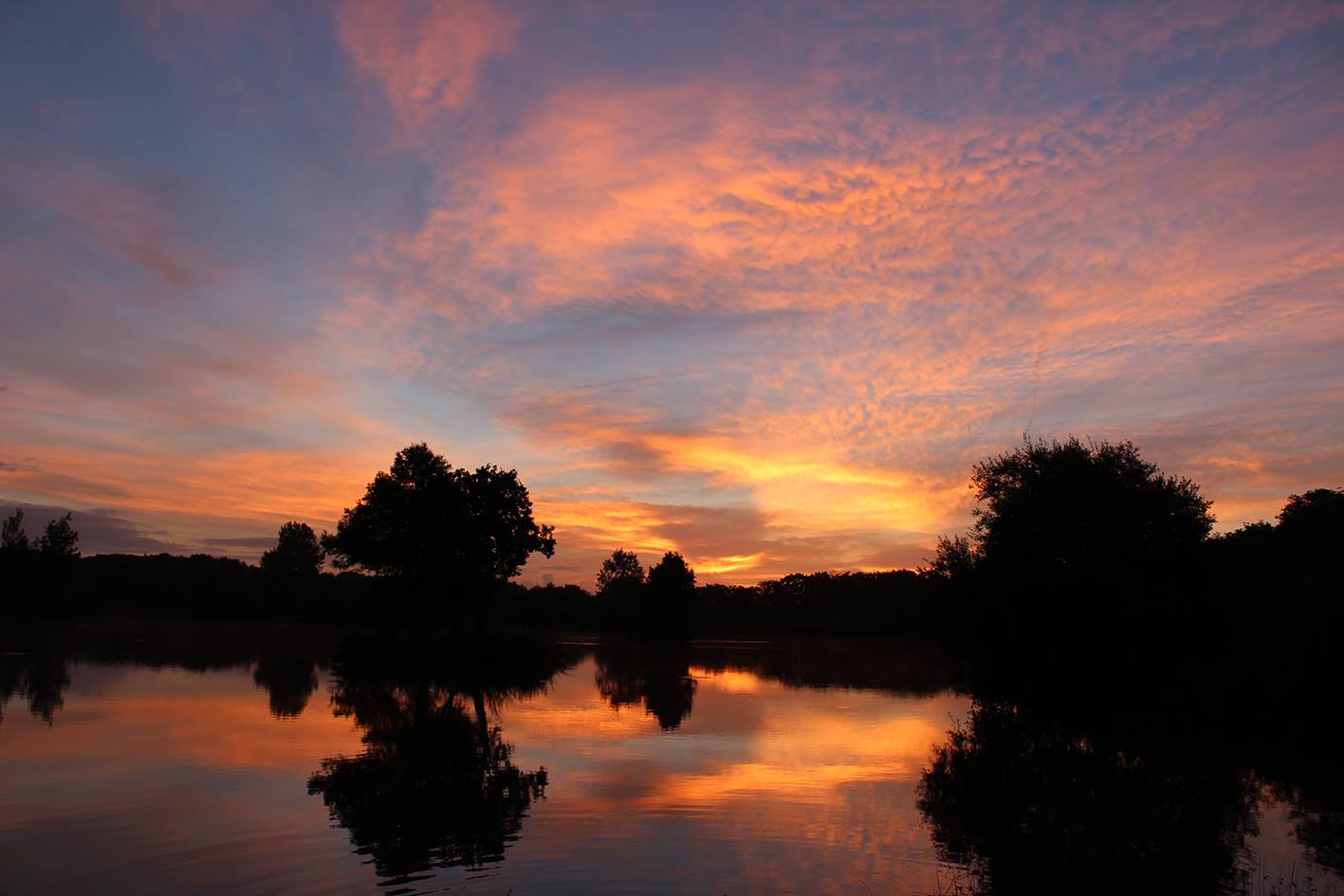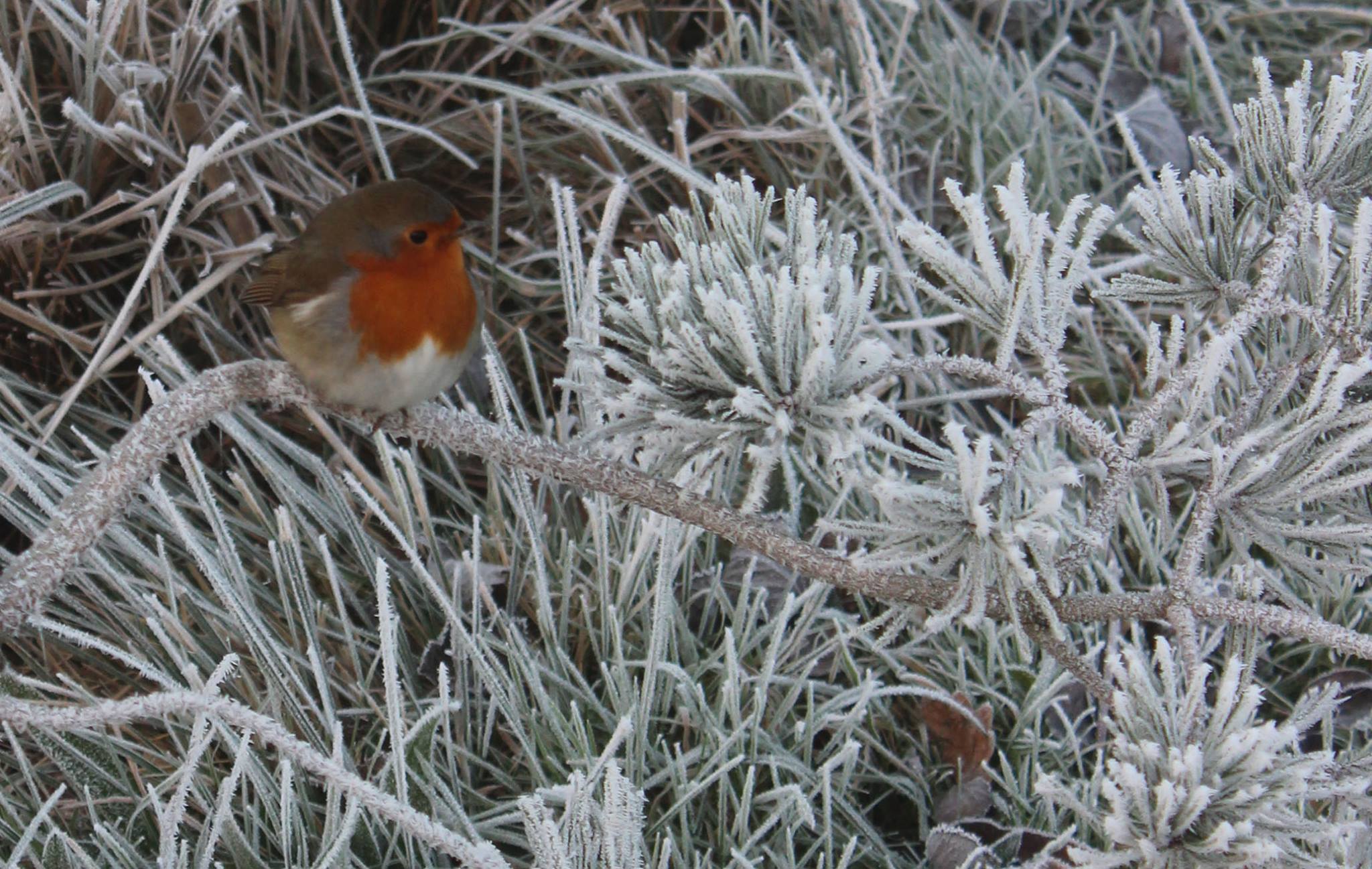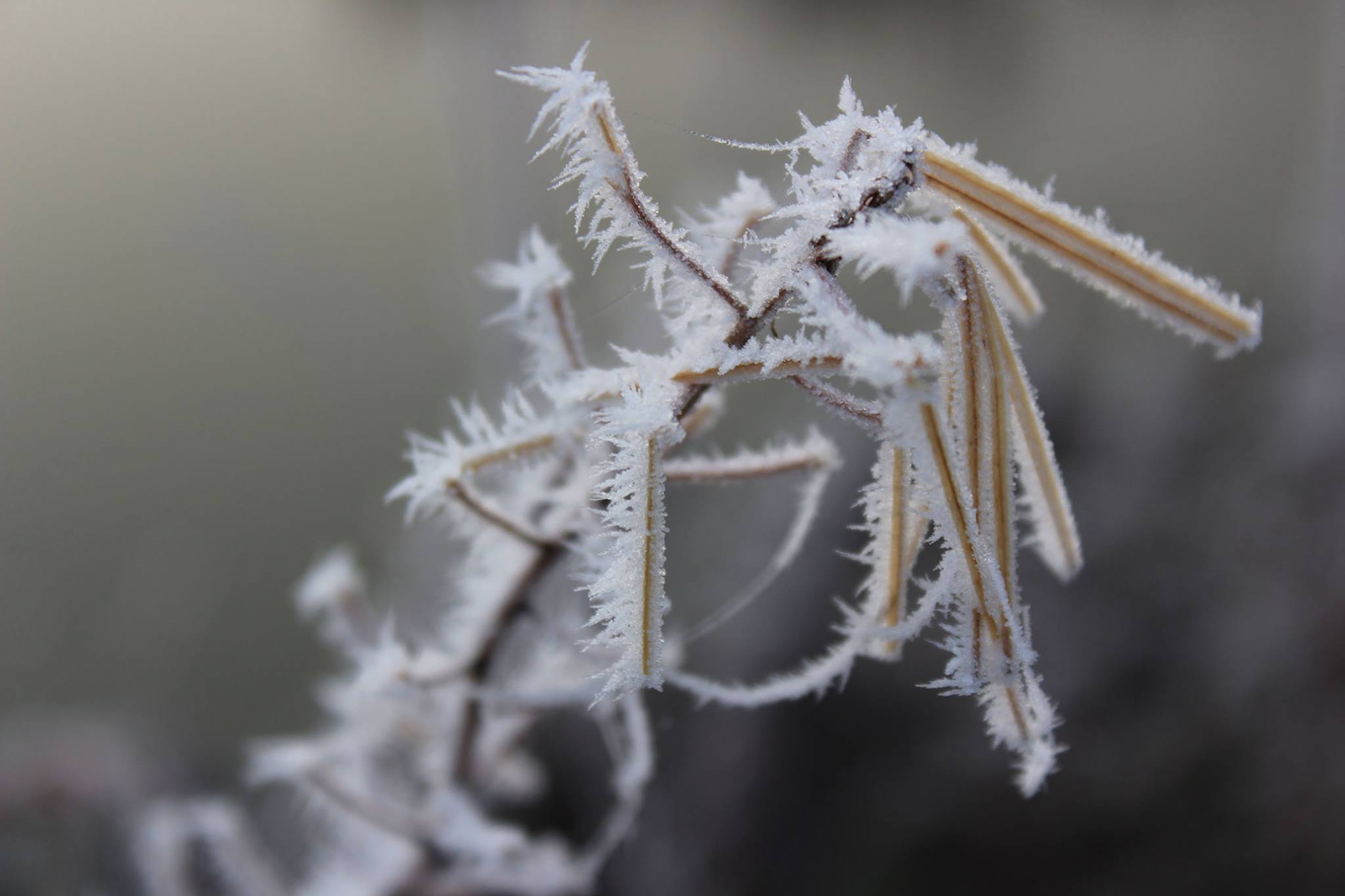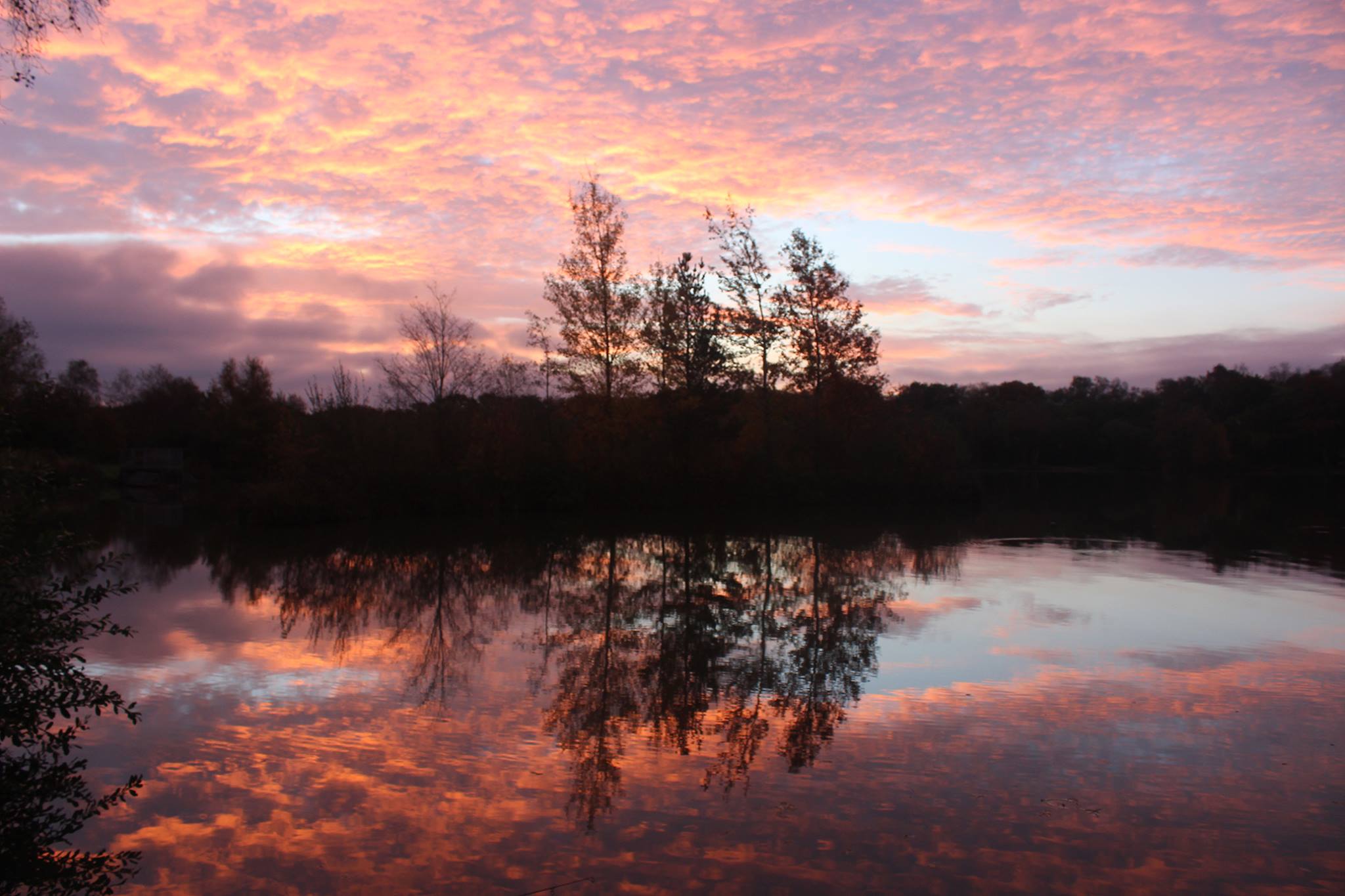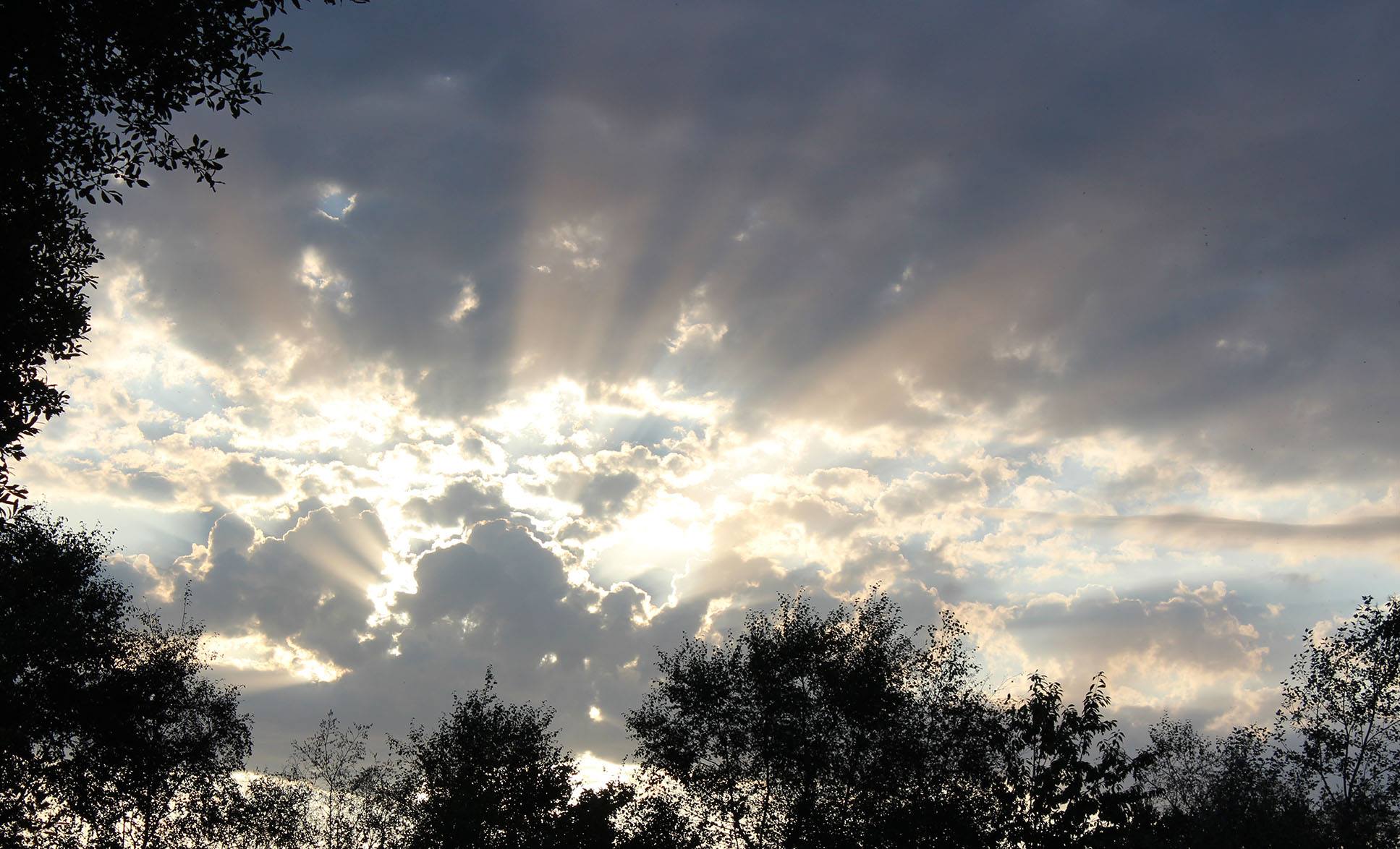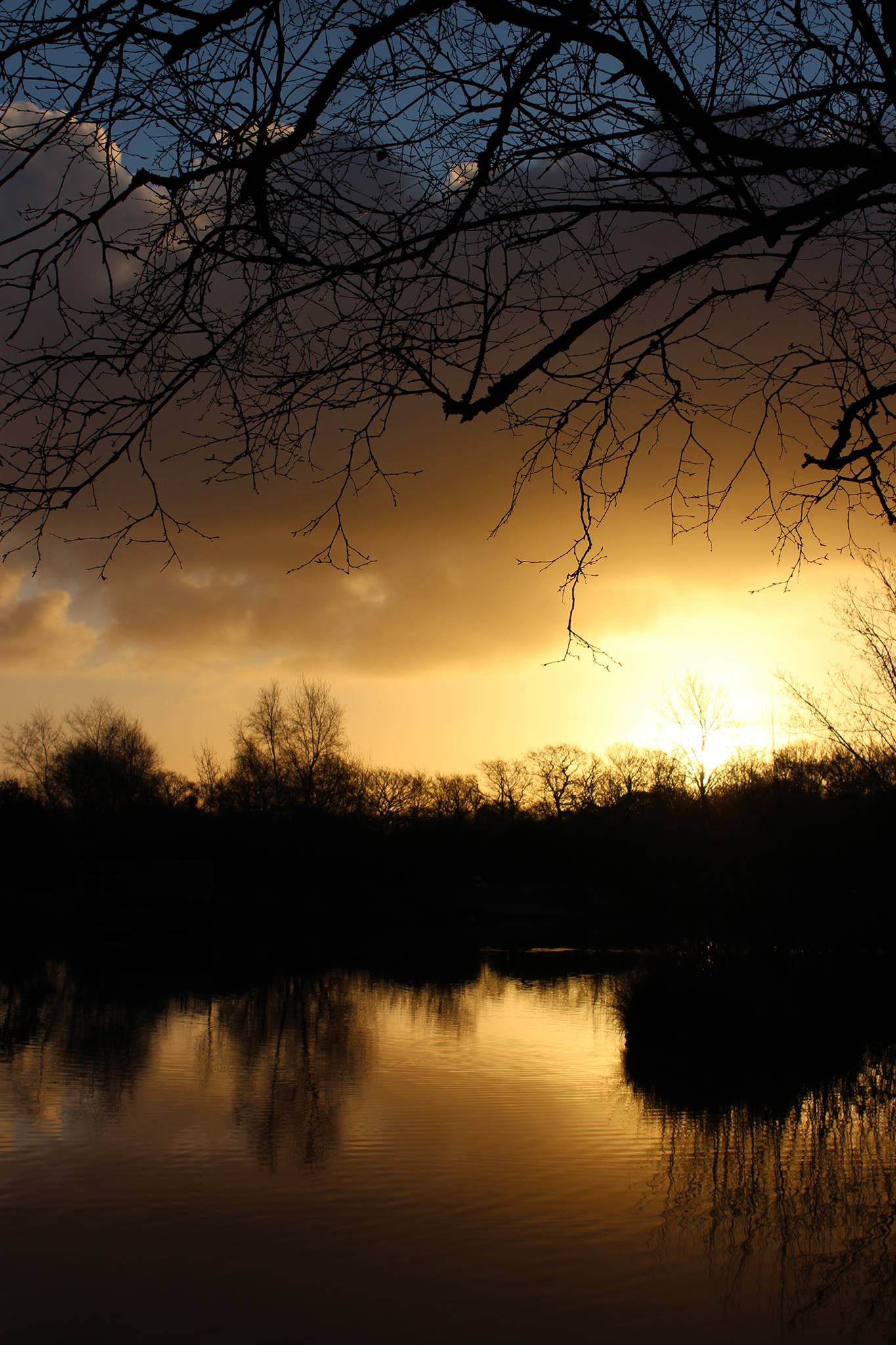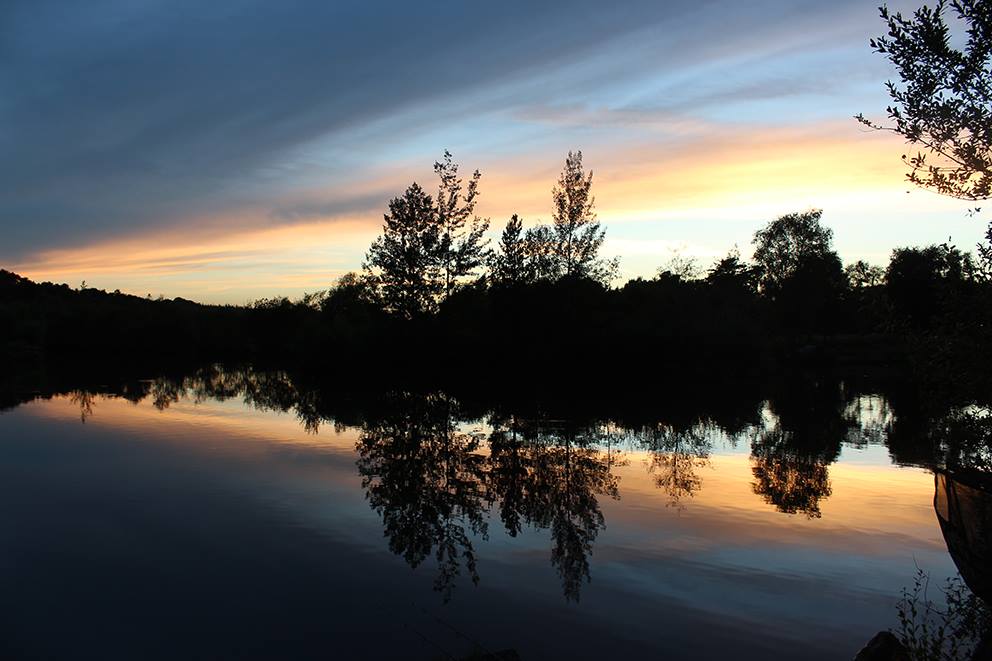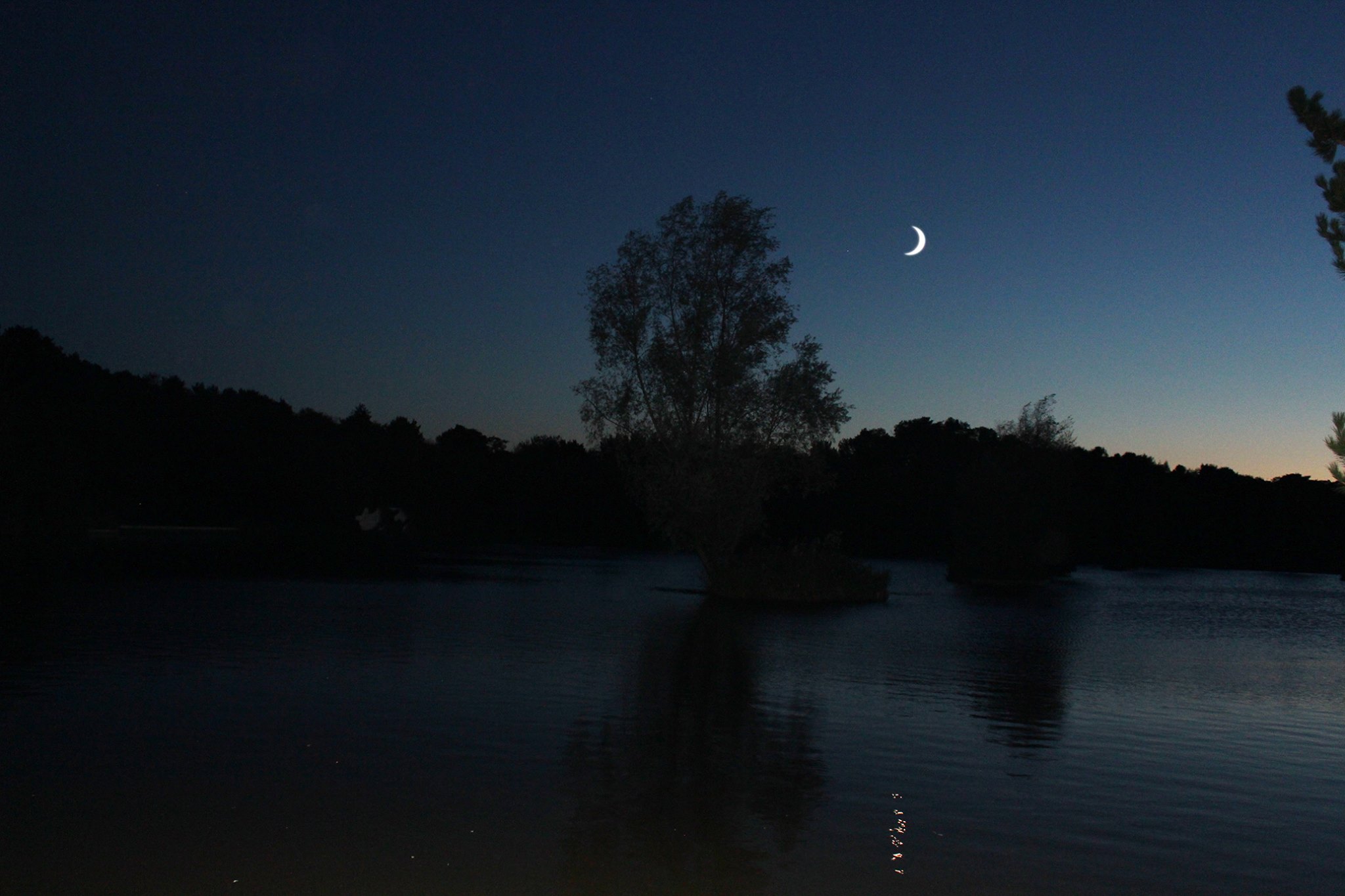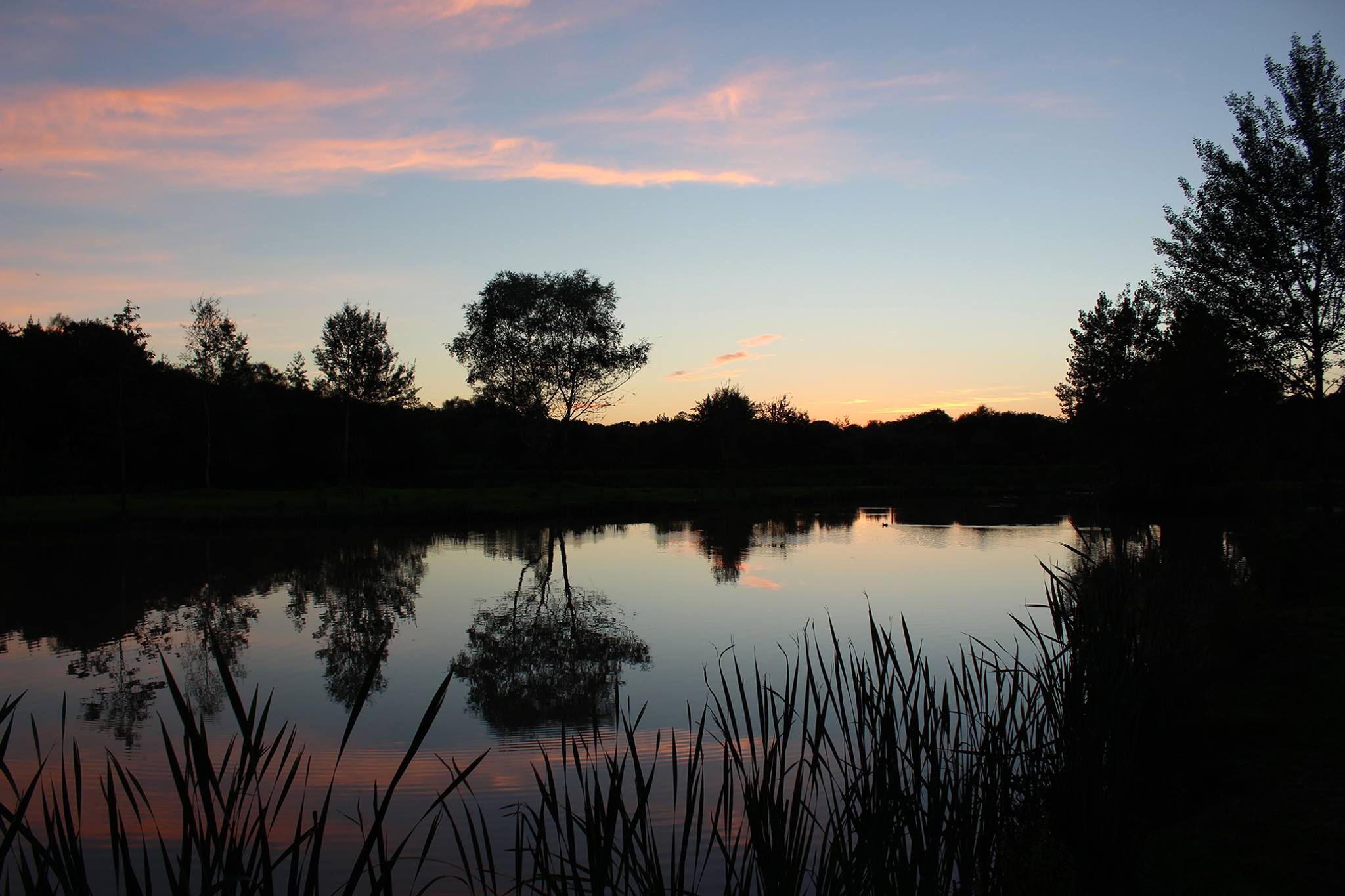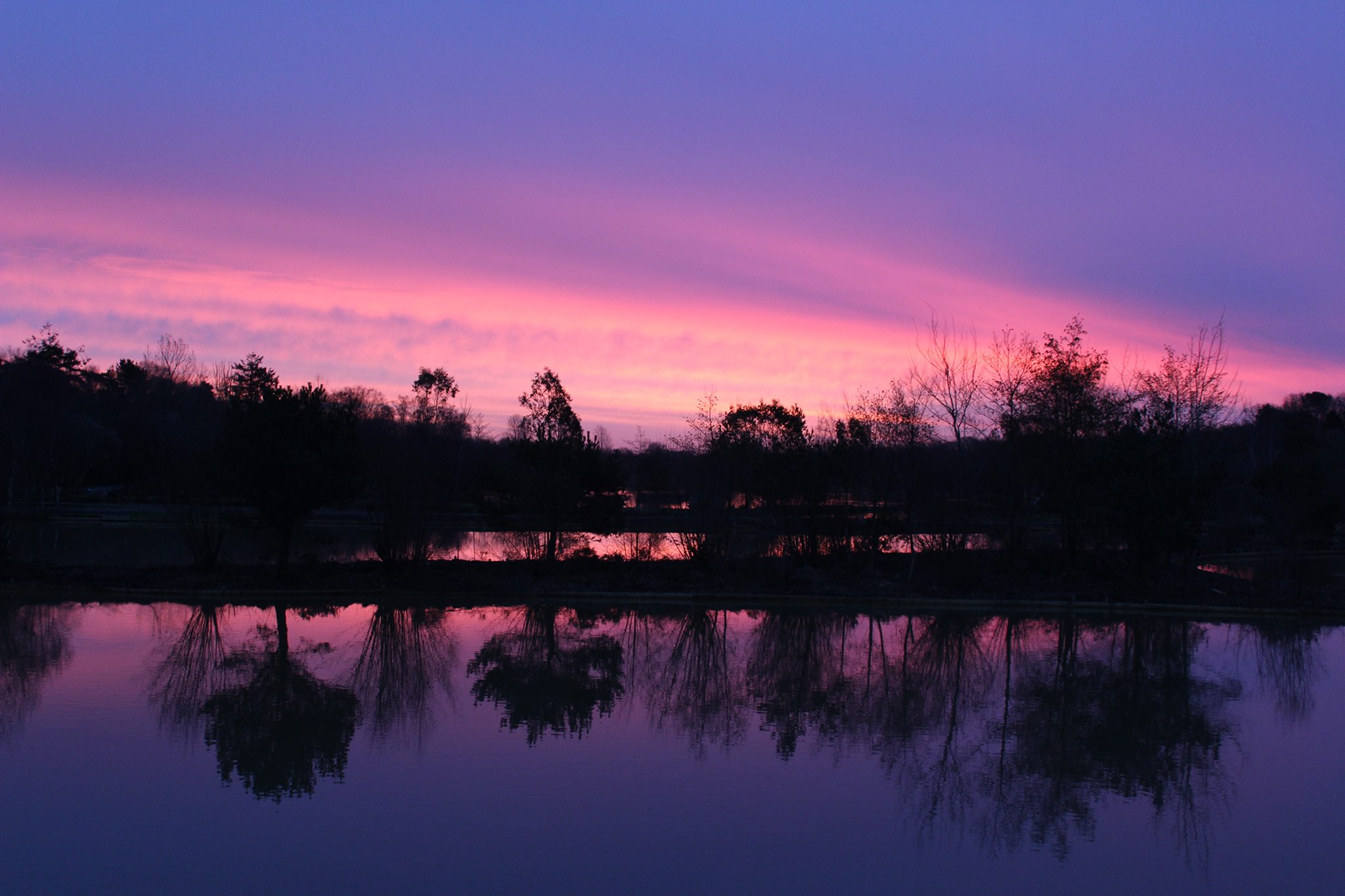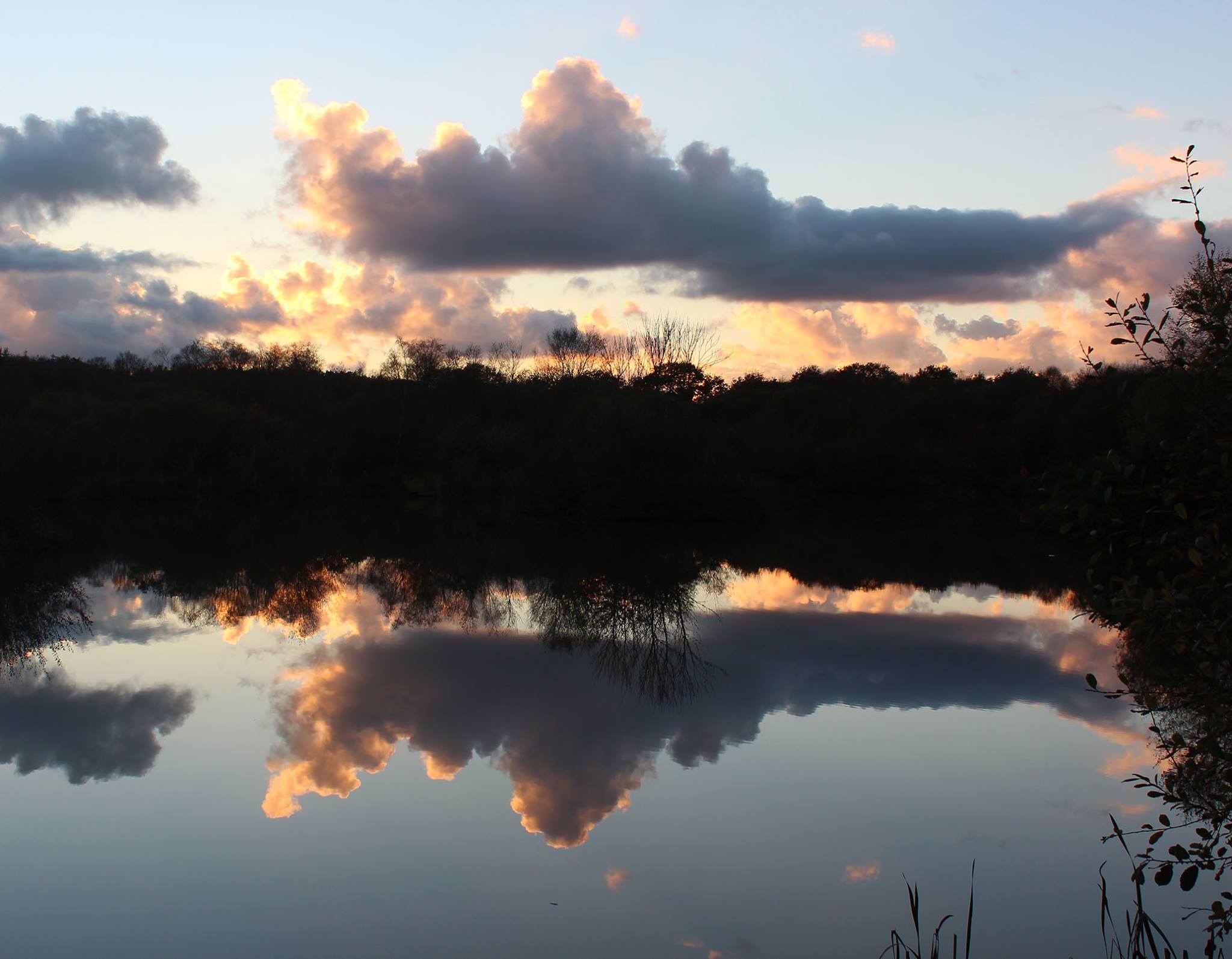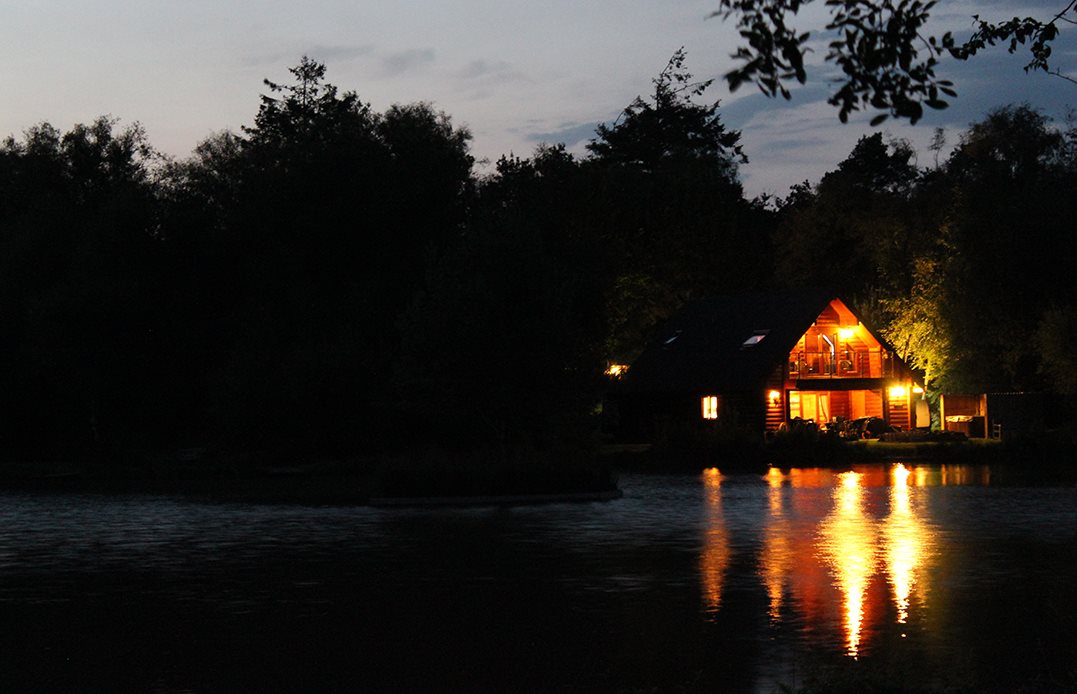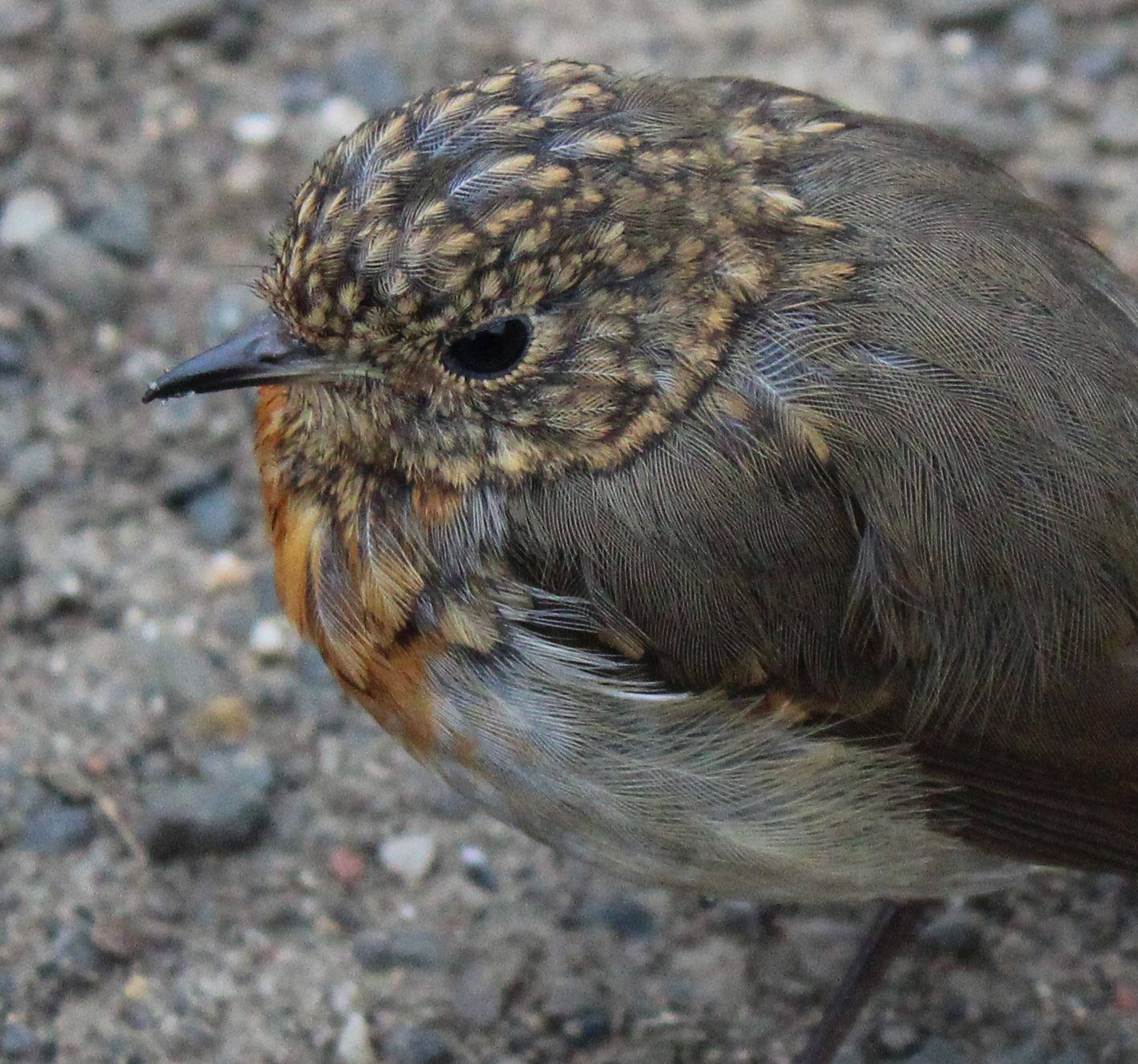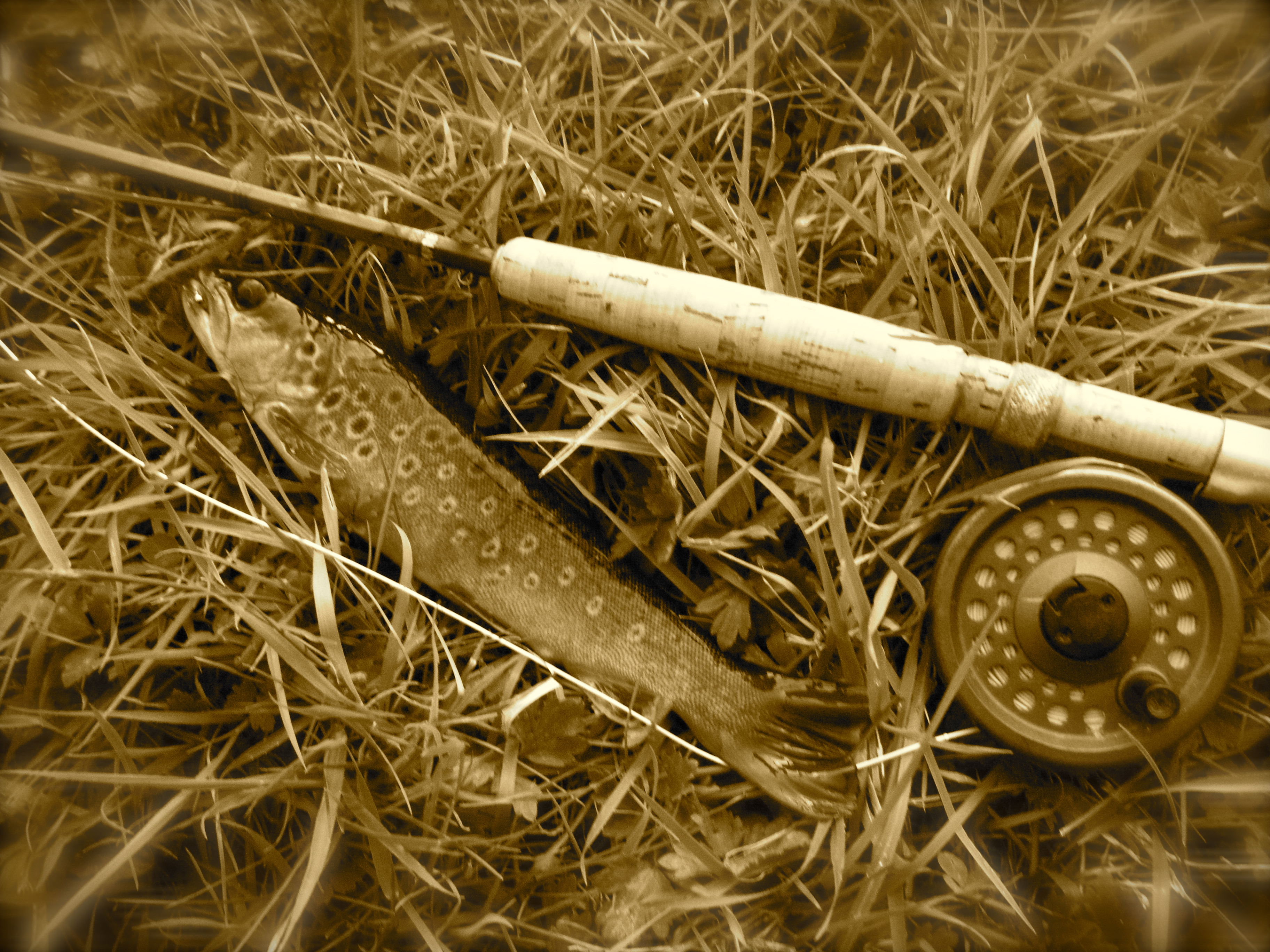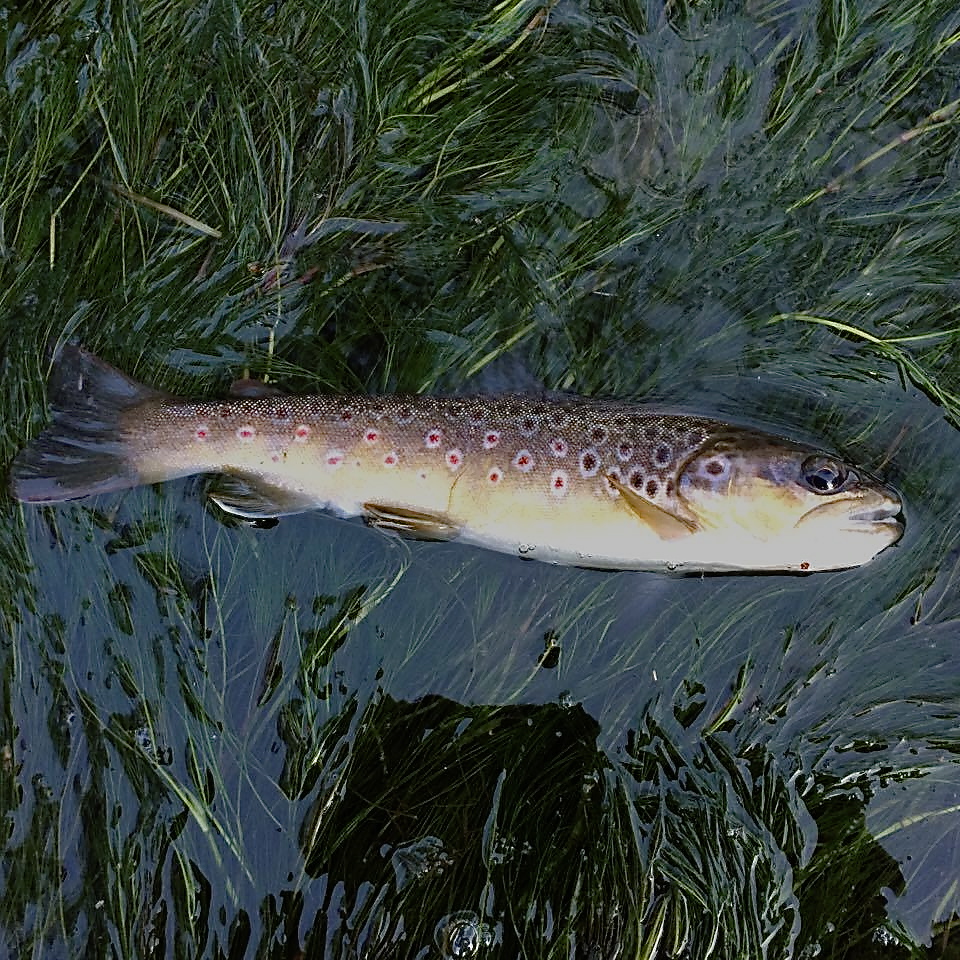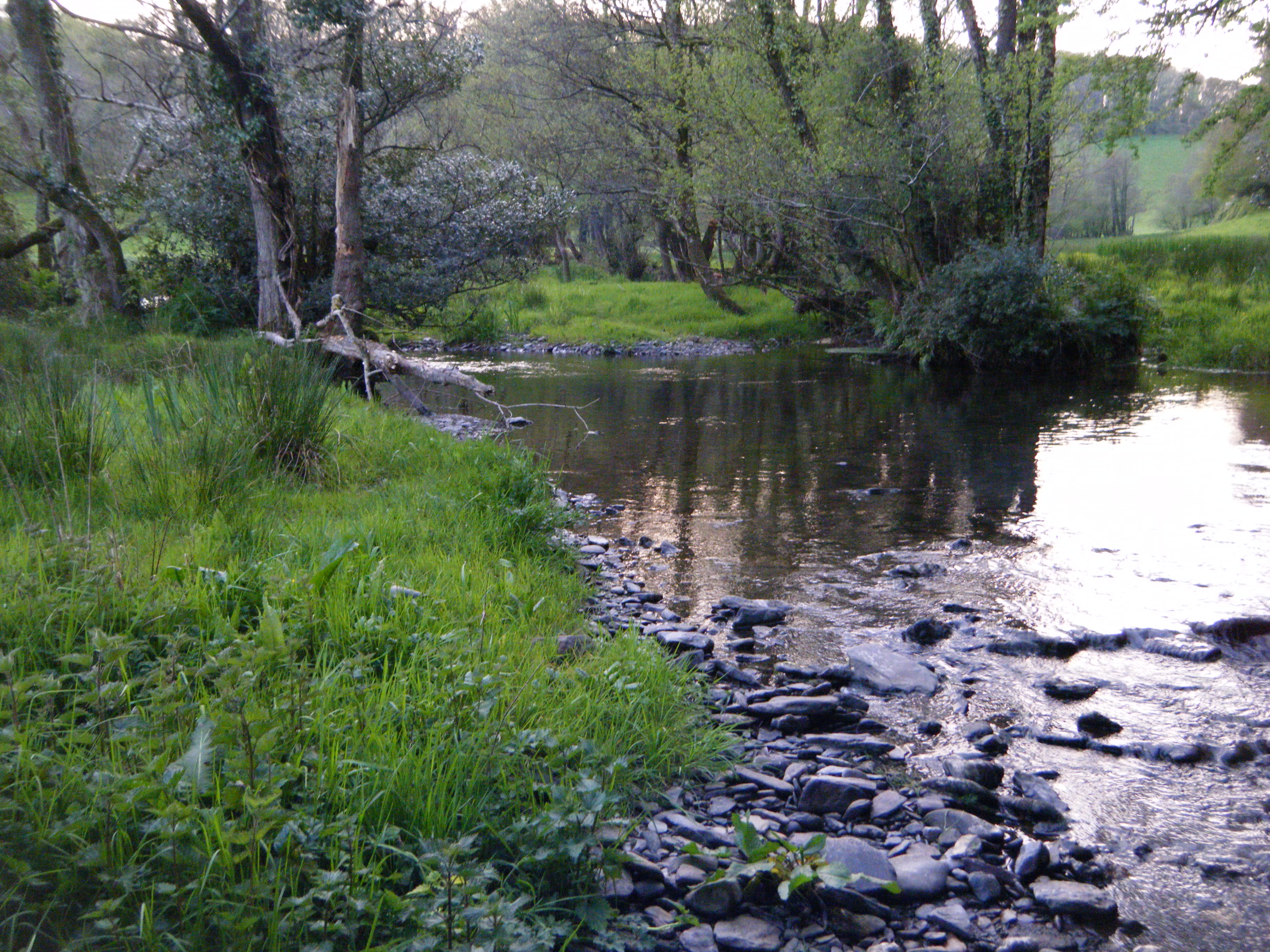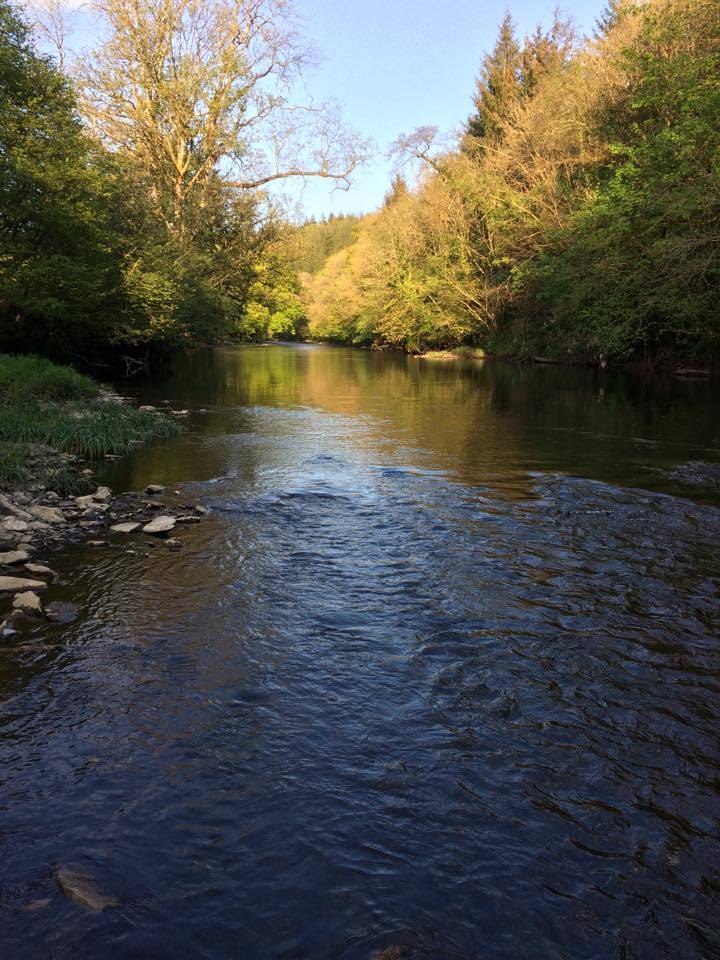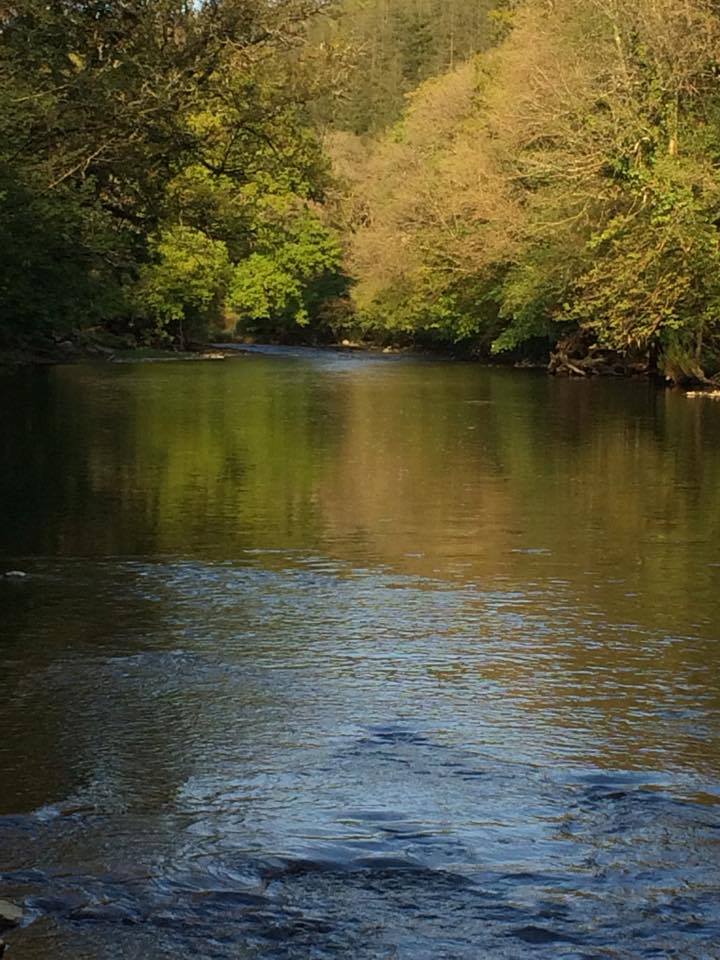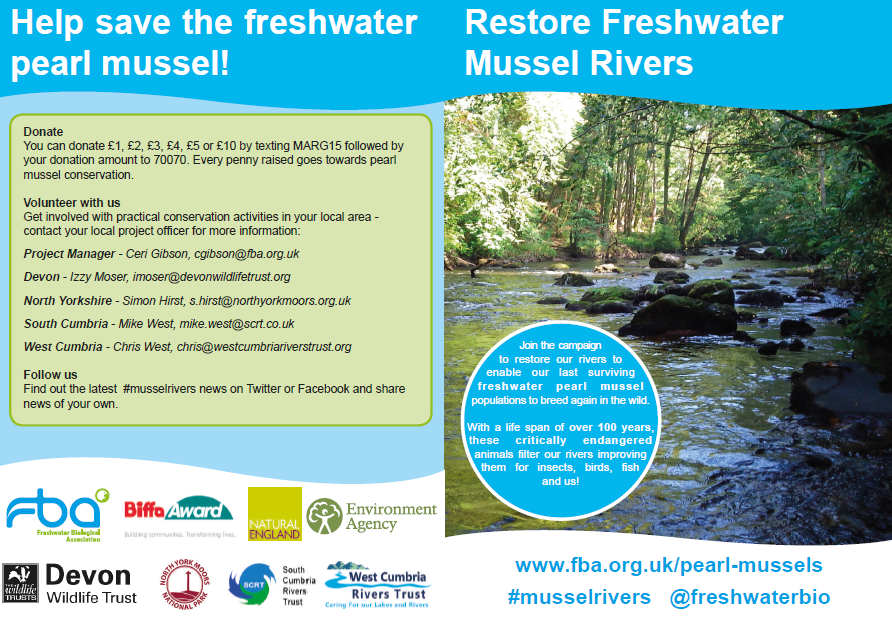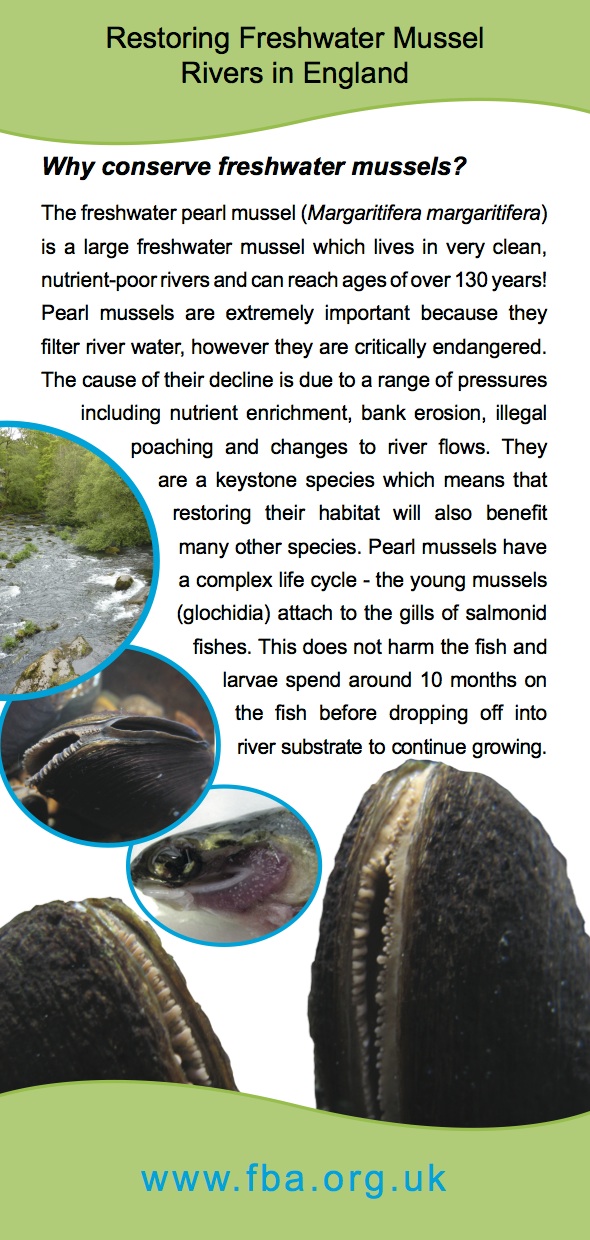
Several years ago I wrote an article that appeared in the Get Hooked Angling Guide it revolved around an old fishing hut that belongs to B&DAA. In the article I reminisced about days gone by and the anglers that fished the Lower Taw and rested a while at the old hut. Rods would be propped against the railings as the anglers paused to enjoy a smoke a drink and a chat. I wrote that piece back in 2006.
I returned to the club water a few days ago and fished down through the old haunts. It was apparent that old trees are no longer removed from the river and their skeletal remains now lie rotting in what were once prime pools. The river was very low following the dry spring and algae coated the stones. There have been a few salmon caught so far this season and I had caught a glimpse of a couple myself a few days before when I fished the water for the first occasion in over a decade.
It was as always good to be by the river as the sand martins swooped to and fro across the water. At my feet I was pleased to see minnows swirling in the clear water undoubtedly feeding upon food I dislodged as I fished methodically downriver.
As the light faded I wondered up river and followed a path through the trees to the water. I worked my fly down through the old buttress pool and tempted a small brown trout with vivid crimson spots upon its flanks. As I turned to wonder back out of the river I remembered the old fisherman’s hut and made my way up through the lush green growth to find the hut that was now fully embraced by nature. I realize that ten years on there are even less of us who remember those spring and summer days when the hut had several visitors every day.
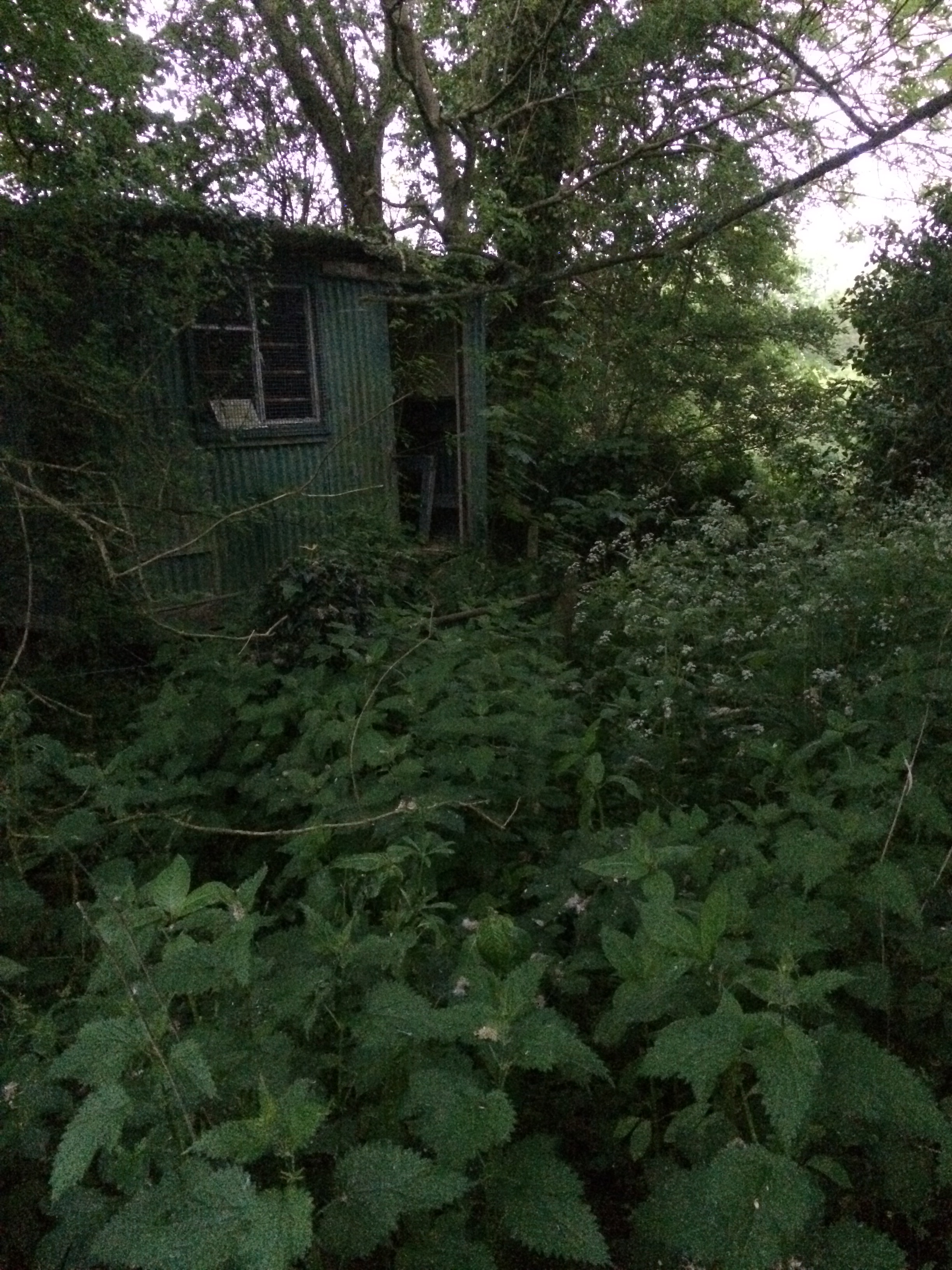
There is a certain feeling of timelessness beside a river the ever-flowing stream yet sadly there is also a profound sense of time evaporating as life passes by. I paused once again below the bridge and looked up through the arches. The banks are now overgrown for this is not an easy place to cast a fly. I remember casting a Mepps across the deep slow moving pool and feeling that delightful throb as the lure worked deep in search of silver salmon.

We have lost so much in the past forty years as fish stocks have dwindled and with it to some extent the richness of an angling life. The decline of salmon and sea trout stocks has resulted in the essential introduction of many restrictions that has reduced the angling effort. With that has come the demise of a whole social scene that once thrived beside the river.
Below is my original article on the Fisherman’s Hut written in 2006:-
The Fishermen’s Hut
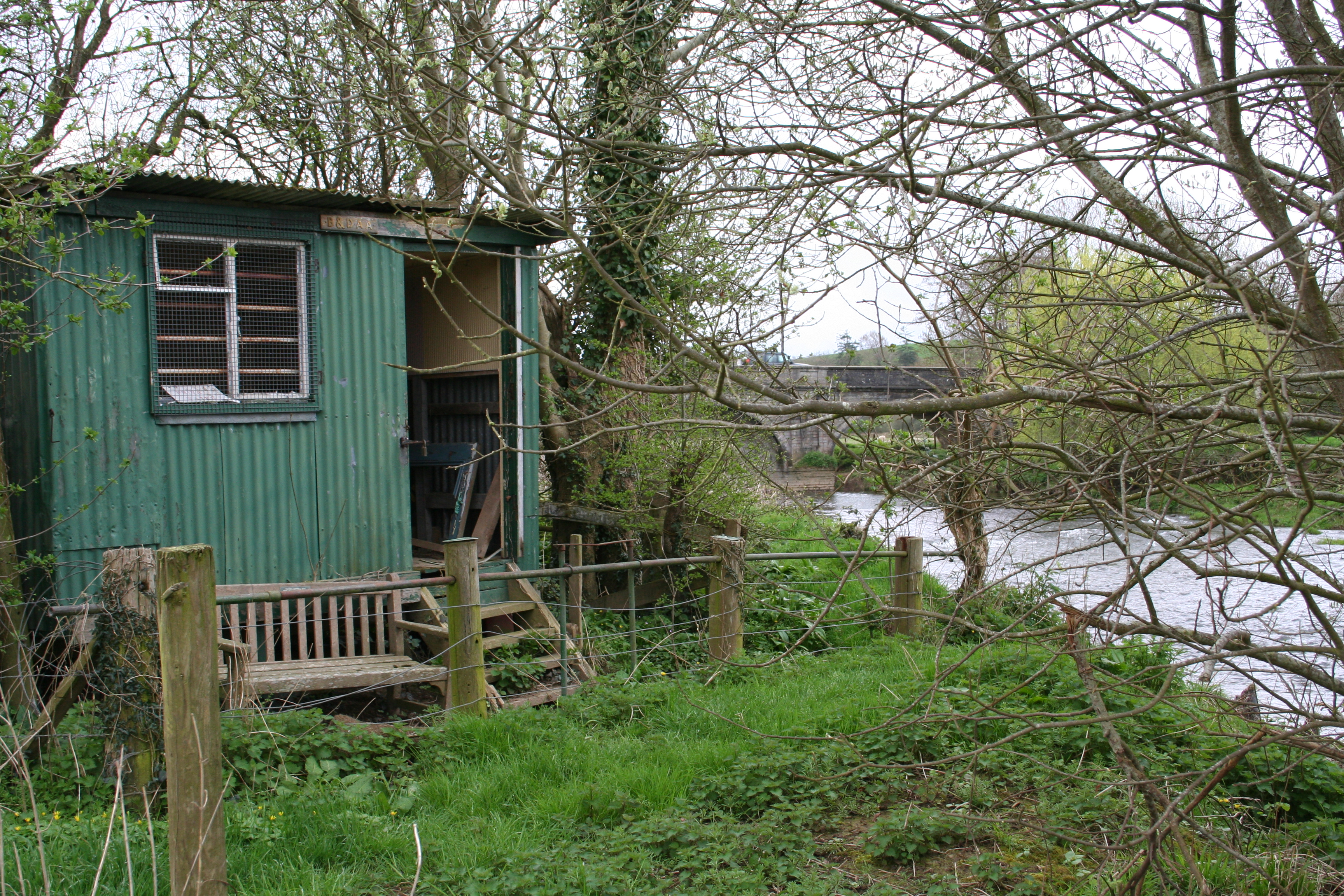
I stopped on the bridge as always to peer into the river below. The sun shone and the river took on that blue green translucence typical of springtime. A few martins and swallows swooped above the river seeking nourishment following their long flight from far off lands. After a brief survey of the pool I moved on and came to the old gate that leads to the riverbank.
The gate hung partly unhinged, it’s fastening asp broken, a few bits of litter caught my eye discarded by some ignorant motorist. A problem that blights our countries hedgerows tarnishing our land with an urban feel, continuing down the steps I glanced at the old fishing sign, rusting and grimy, the clubs name still present above the words, “Private Fishing Club Members only”. The pathway beside the river had always been well trodden at this time of year (Early April) yet now it was partly grown over. Celandine flowers brightened the waterside meadow with their bright yellow hues. It felt good to be walking the riverbank again after a long break but strange melancholy feelings drifted into my mind. I glanced at the old corrugated fishing hut its door was open, someone was about I thought, tidying up or fishing somewhere down stream.
My club membership had long since lapsed and I was heading to fish the free water a hundred yards or more downstream. I had fished this section of river heavily twenty-five years ago hoping for a Silver Spring salmon but had visited rarely over recent seasons. However a river is like a long lost friend familiarity returns quickly and certain things retain a core character. The constant flow of a river towards the sea has always given me an almost spiritual and reassuring sense of stability. A feeling I had always treasured each spring as I trod the banks rod in hand hopeful of one of anglings greatest prizes, a fresh run silver salmon. The grass flourishing, buds bursting into life on riverside trees and spring birds filling the air with song, migrants returned from a long cold winter, a sign of the coming warmth of summer.
I had very little time today just a grabbed moment from life’s busy schedule no time to fish methodically, just a few random casts into favourite lies. I remember long ago seeking a salmon a prize that seemed unattainable. Eventually after many days by the river I had tempted a salmon, what had seemed so difficult I realised was really quite easy. You just had to be in the right place at the right time with a little good fortune. Salmon are a perplexing fish, totally ignoring all offerings one minute then suddenly erupting from the water to seize your bait, lure or fly with an unbelievable determination. After catching that first salmon an angler will forever be able to cast in hope for he believes in the impossible. This faith remains forever fuelling the desire for cast after cast.
I climbed down the riverbank entering the water above a sweeping bend in the river. An old tree stood, its roots exposed from constant attack by annual winter floods. Beneath the tree was a favourite lie that had held many salmon and sea trout over the years. I waded out into the river, relishing the feel as the cool water pushed against my legs. I extended my fly line above the water and dropped a bright orange Ally’s Shrimp fly near the far bank. I allowed the fly to swing tantalizingly across the flow, took a step downstream and repeated the process. Many times in the past I had seen salmon and sea trout leap from the water at this spot. I hoped to see one now, I really didn’t need to catch, to glimpse the prize would suffice.
Strange really, since the introduction of catch and release in the early season I have lost much of my determination to seek salmon. I always used to relish taking that first fresh Springer home to enjoy with new potatoes and lashings of butter. I regularly fish for a wide range of species returning 90% of the fish I catch. I have no problem returning a coloured salmon in the autumn but I somehow struggle with returning a bar of silver sea liced salmon. I often think of Hugh Falkus’s comments on catch and release and his views that it was somehow wrong. Somehow I feel he had a point there is something undignified in toying with a fish so magnificent as the Atlantic salmon. Perhaps I just don’t like being told I have to return the fish, I remember catching a well-mended Kelt several years ago. It had inhaled the Mepps spinner to the back of its throat and was bleeding profusely. I gently returned it to the river, to my horror it keeled over and drifted away to die. How would I feel if this happened to a prime fresh run fish?
This leads me on to another restriction that has been imposed to preserve stocks. In the early season I and most other anglers used the spinner to fish for salmon. A Mepp’s spinner or Devon Minnow was cast into the cold waters and retrieved slowly its throbbing reverberated through the line to the rod giving a physical transmission between angler and river. At any moment there was the anticipation of the electrifying take as a bar of silver attacked the lure. I fully support the need to preserve salmon stocks and if that impinges on my pleasure then so be it I guess, I just wonder about the long-term effect of these restrictions on our freedom?
I continued to fish on down stream, ice cold water started to seep into my chest waders. I realised that my repairs to the holes had failed and a new pair of waders would be needed before my next trip.
It was soon time to leave I had to collect my young son from his cricket coaching. I climbed from the river my boots squelching as I retraced my way along the riverside path. I came again to the old fishermen’s hut, the door was still open, and inquisitive I strolled over and peered inside. The door had been broken from its hinges, the old leather seat was torn, old mugs stood in an old wooden cabinet where mice had made their home the old hut was damp and derelict. A feeling of sadness came upon me. I immediately understood the melancholy feeling I earlier sensed. Twenty odd years ago I had spent many hours beside this river and talked with the club anglers of the day. They were anglers in their fifties or sixties who had fished the river for many of life’s allotted span. They generally had a tale to tell of the good old days, of encounters with huge spring salmon, some won some lost. They had intimate knowledge of the river and a deep respect and love for the salmon. Each year working parties would trim troublesome branches and carry out repairs to gates and stiles. The fisherman’s hut was a meeting place where tales were swapped over cups of hot tea. Fishing magazines sat on the table to provide inspiration during a break in fishing or tending to the riverbank. There was always a rod leaning against the old rails that segregated the front of the hut from the bank side. A bench dedicated to an angler invited one to, “rest here and find pleasure”.
It dawned upon me that a generation of anglers had passed away. Few anglers now trod these banks in search of spring salmon. Upriver on prime beats people still pay large sums to fish but here on the club and free water few bother to cast a line. Perhaps restrictions have taken away the motivation for these anglers to fish or perhaps people no longer have the patience to chase dreams. I realise that back then we seemed to have time to talk, time to fish and time to dream.
The faces of a host of anglers fill my minds eye as I walk away from the river and the derelict old fisherman’s’ hut. I realise that whilst the river flows relentlessly on we anglers are just passing spirits. The comfort of the rivers immortality is temporarily shadowed by the realisation of our own fleeting visit to its banks.
As I walk across the bridge I again pause as always for one last look at the river. A car races past, a train thunders along the nearby track I re-enter the modern world and walk back to the car. On getting home I think back to the old fishing hut and vow to jot down my thoughts before they get lost and drift away like the old anglers who once fished the river.
Since writing the article my views on catch and release have mellowed and I no longer yearn to keep that spring salmon believing it far better to carefully return it to continue its upstream journey.




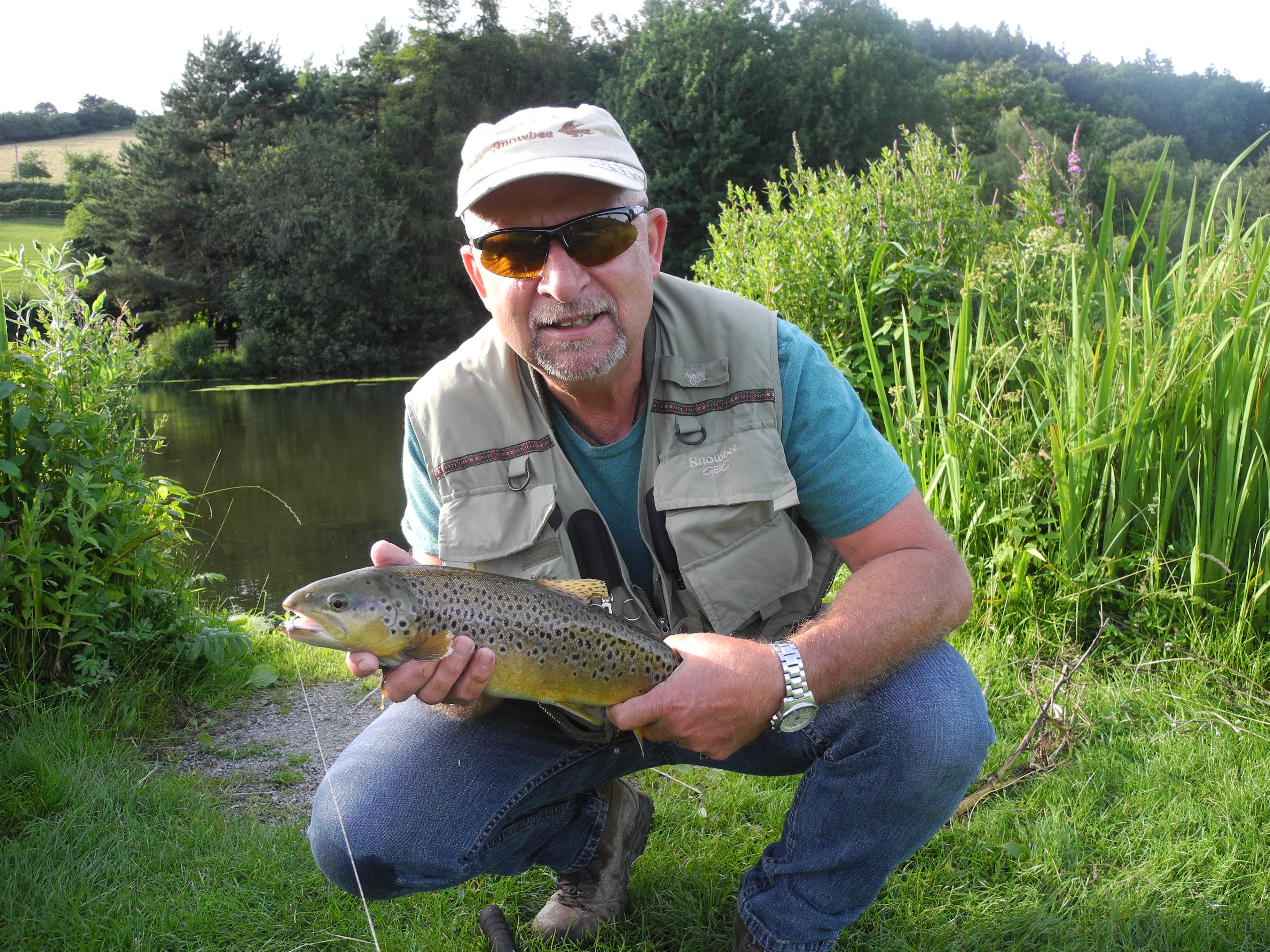
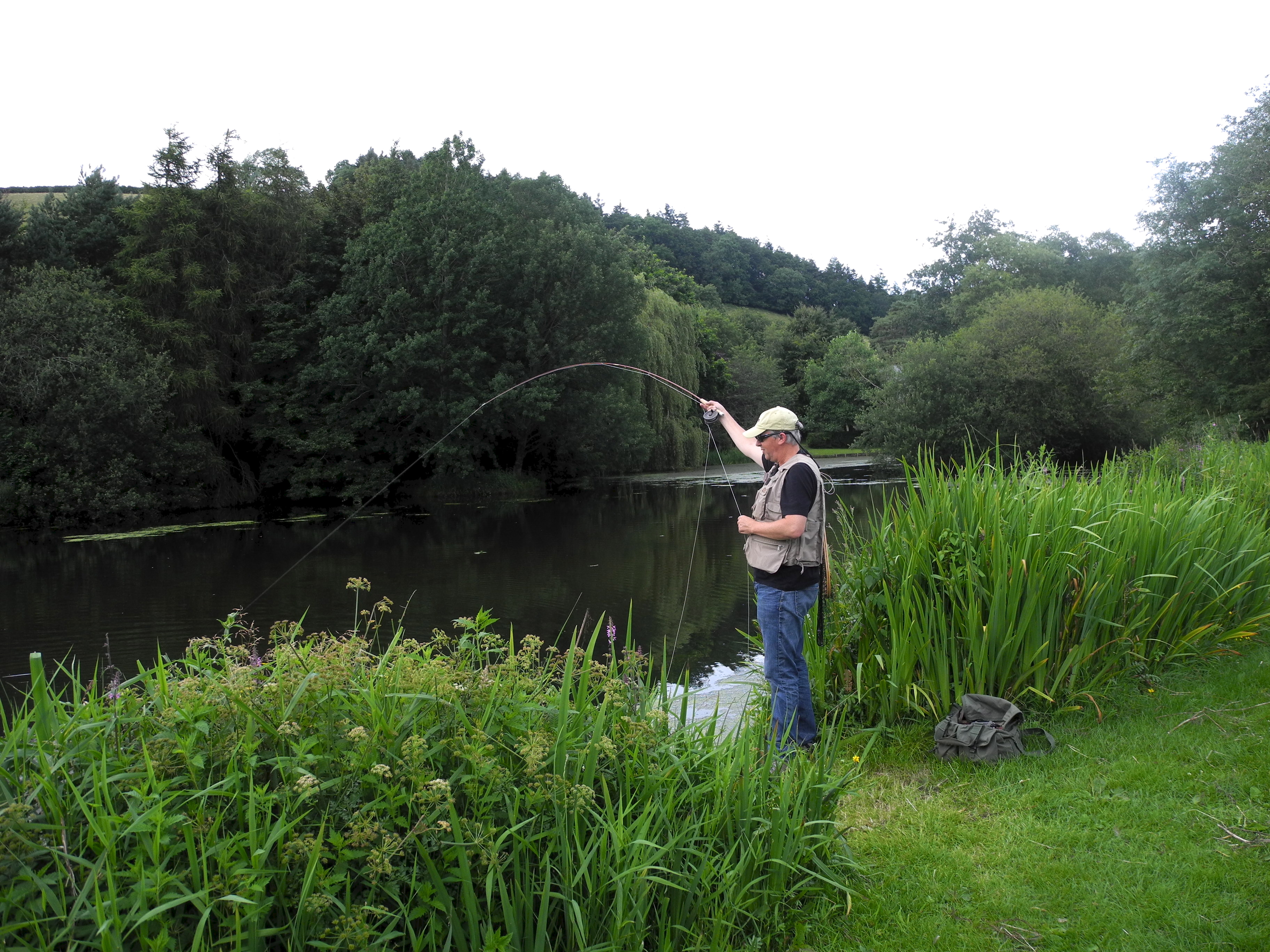

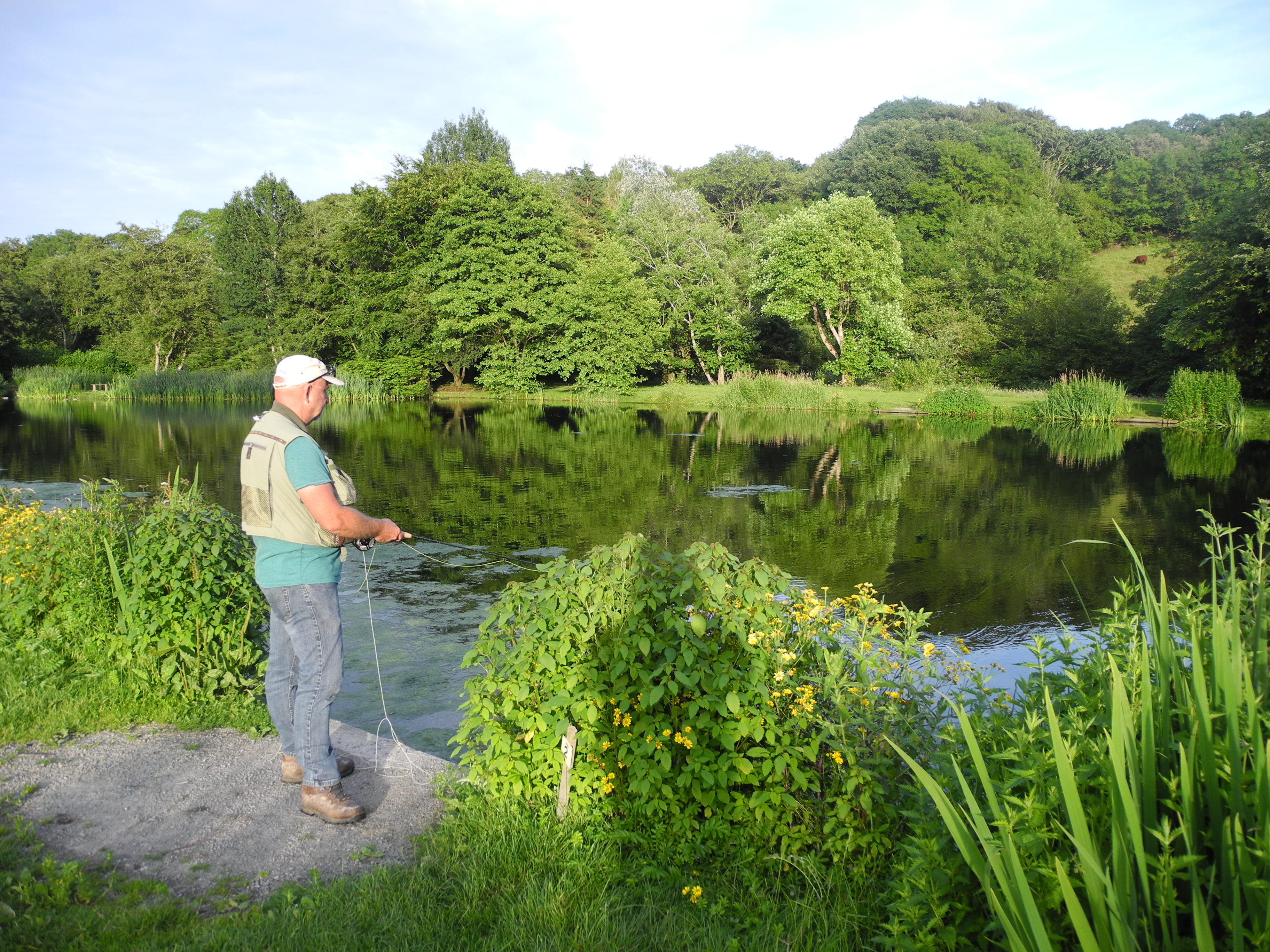
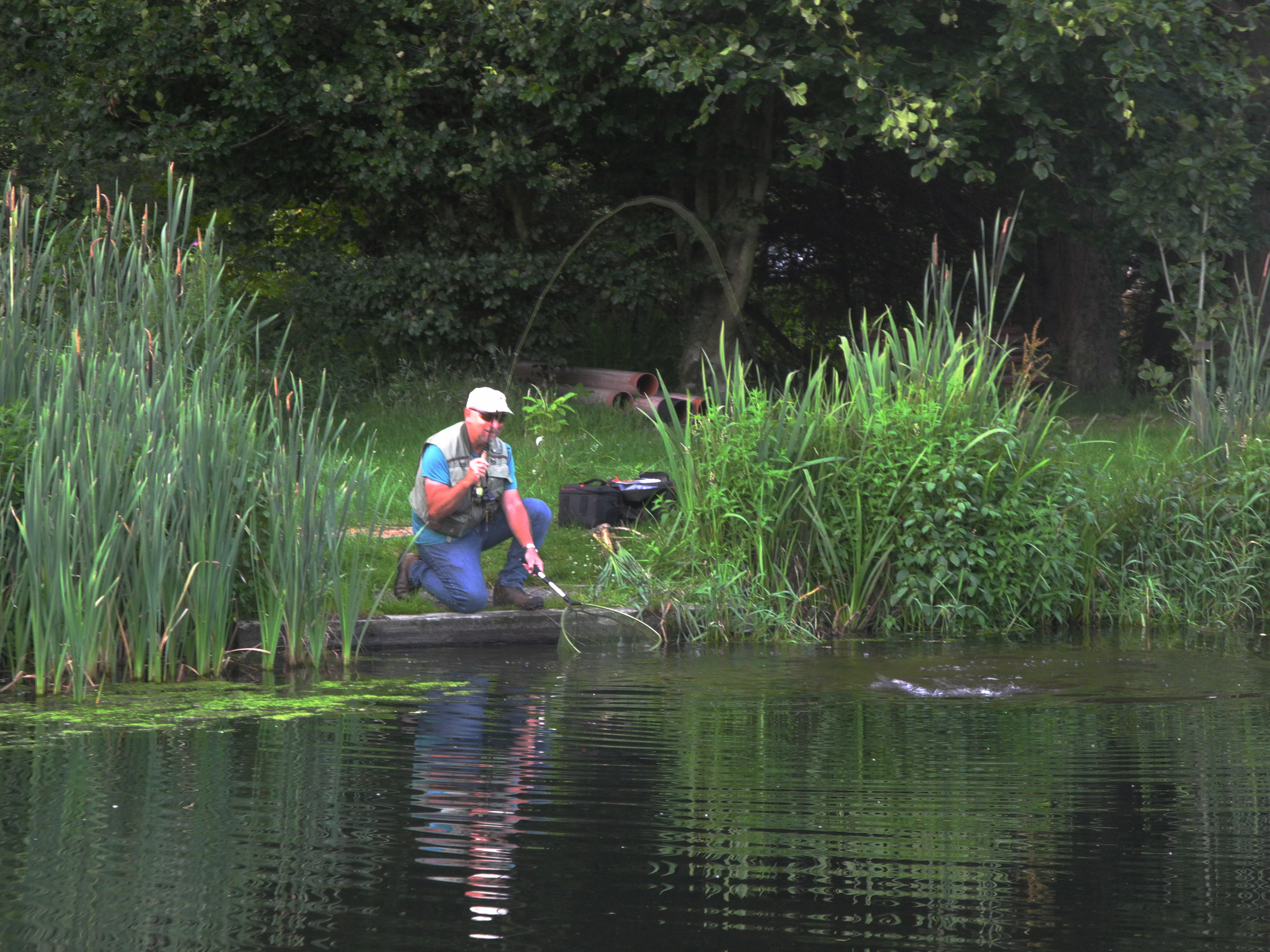
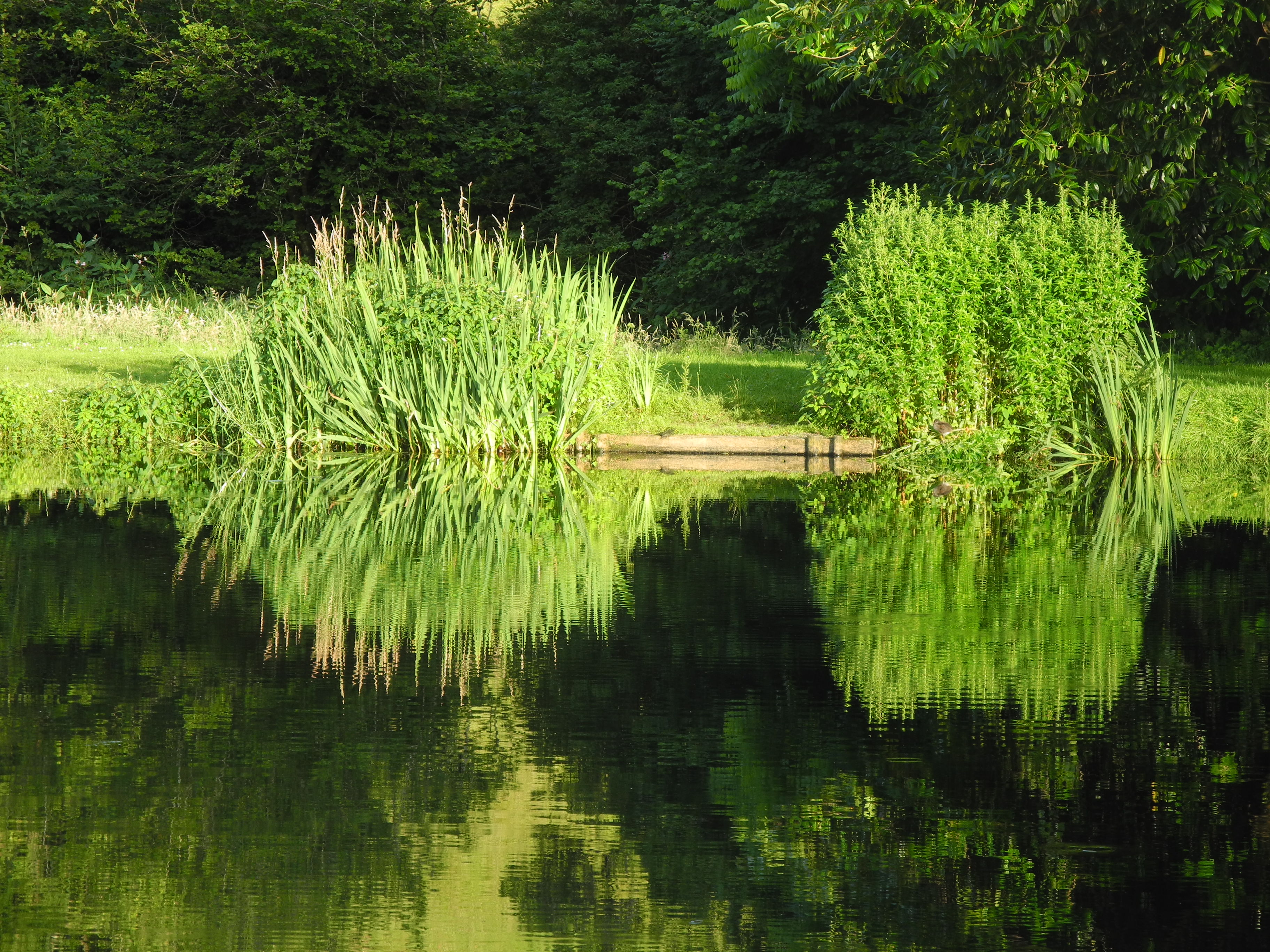


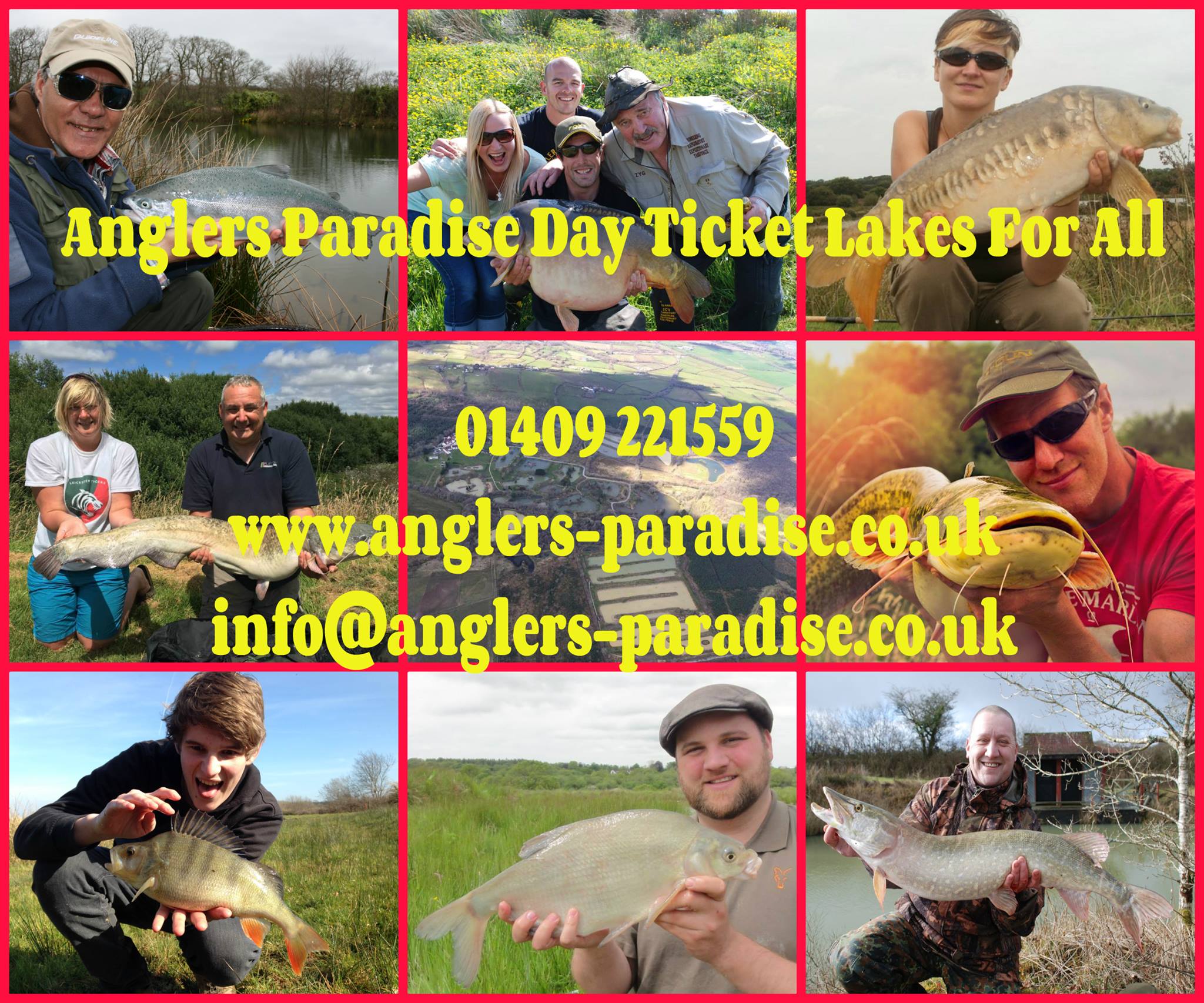

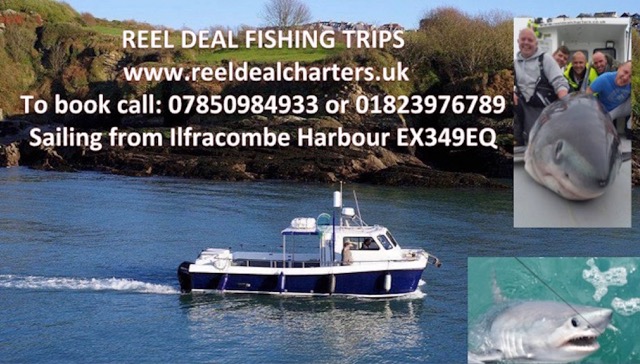










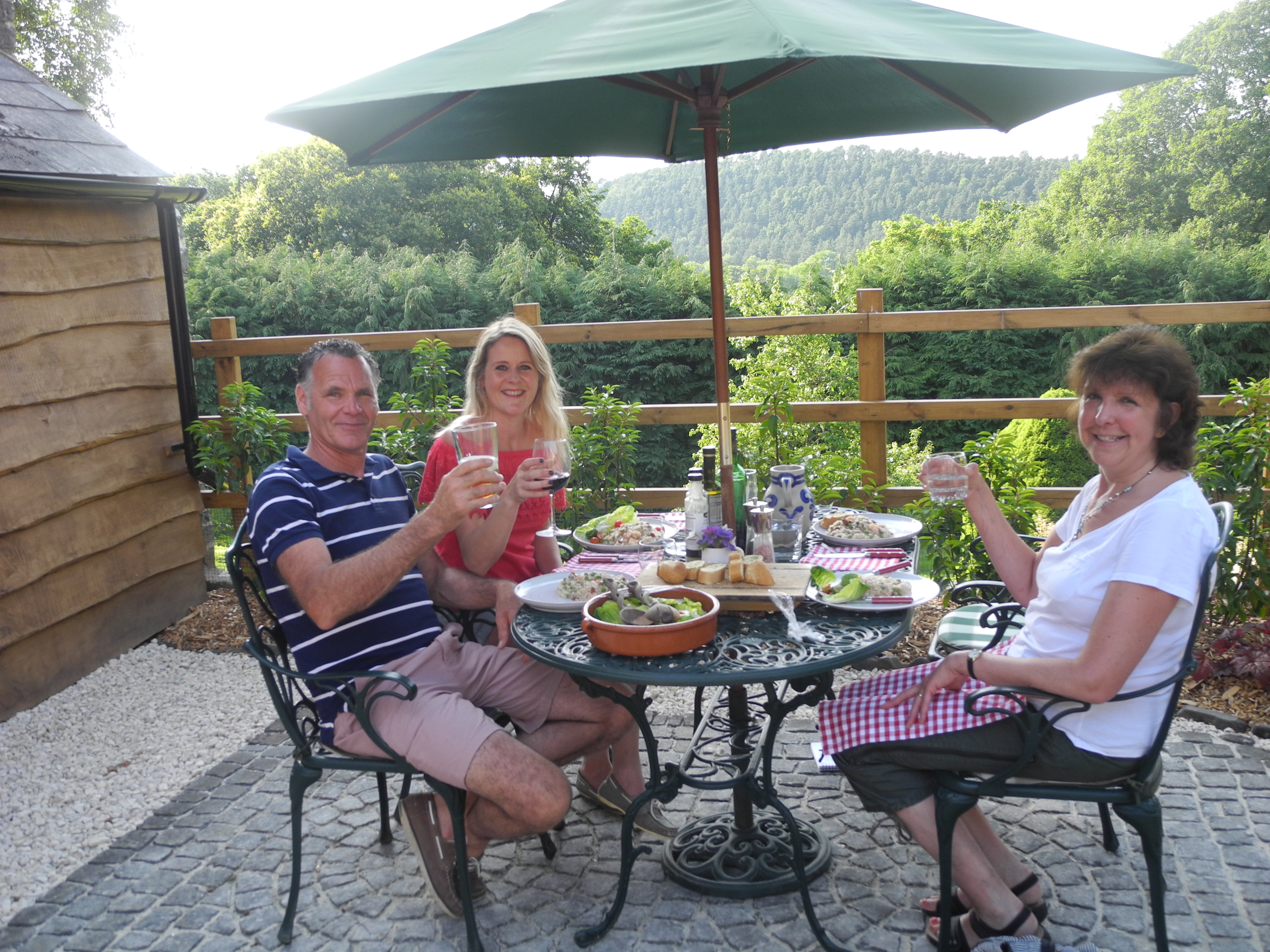
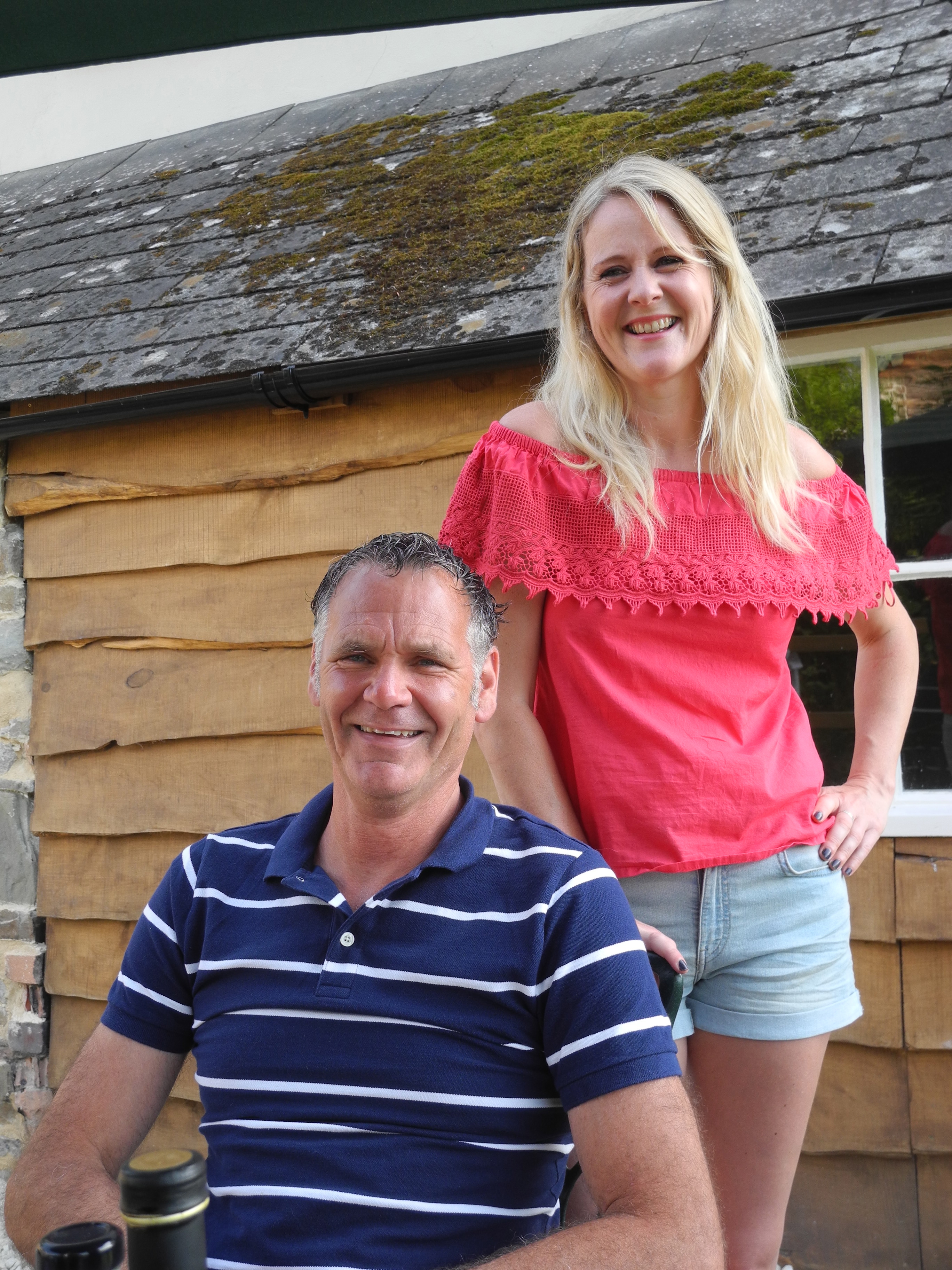
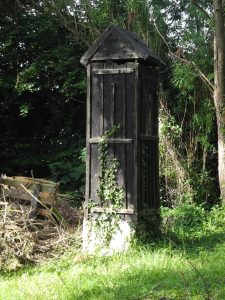
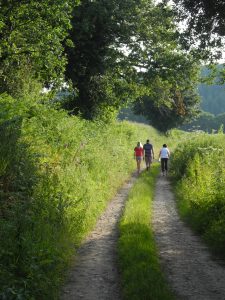
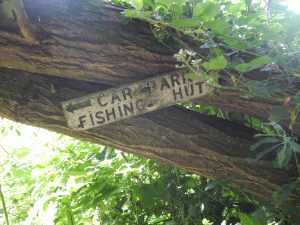
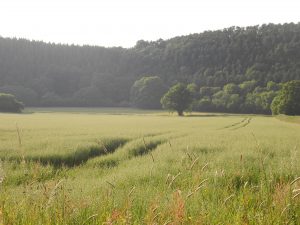
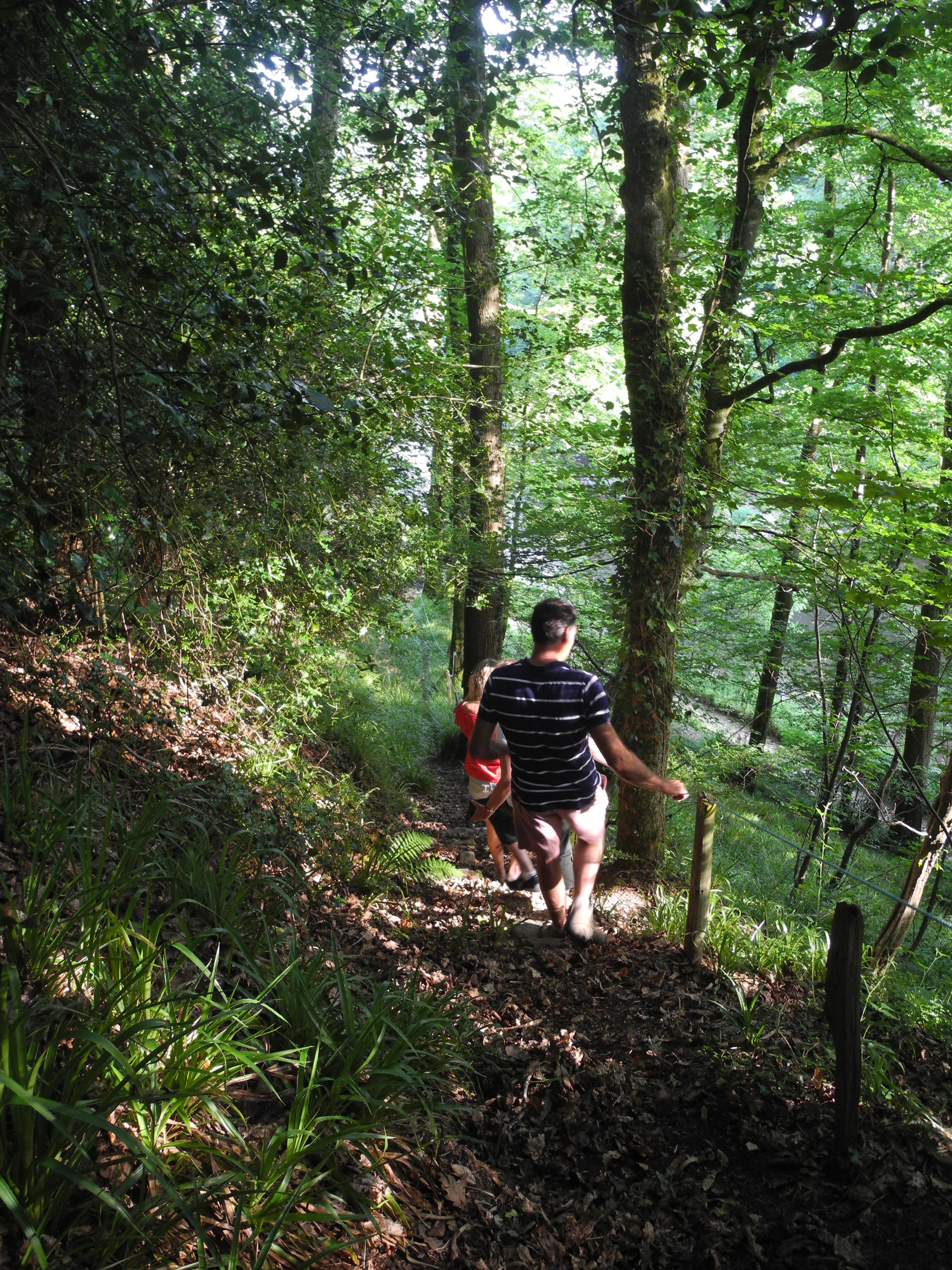
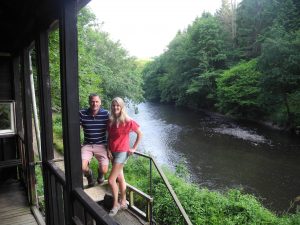
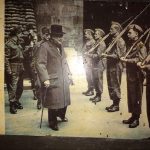
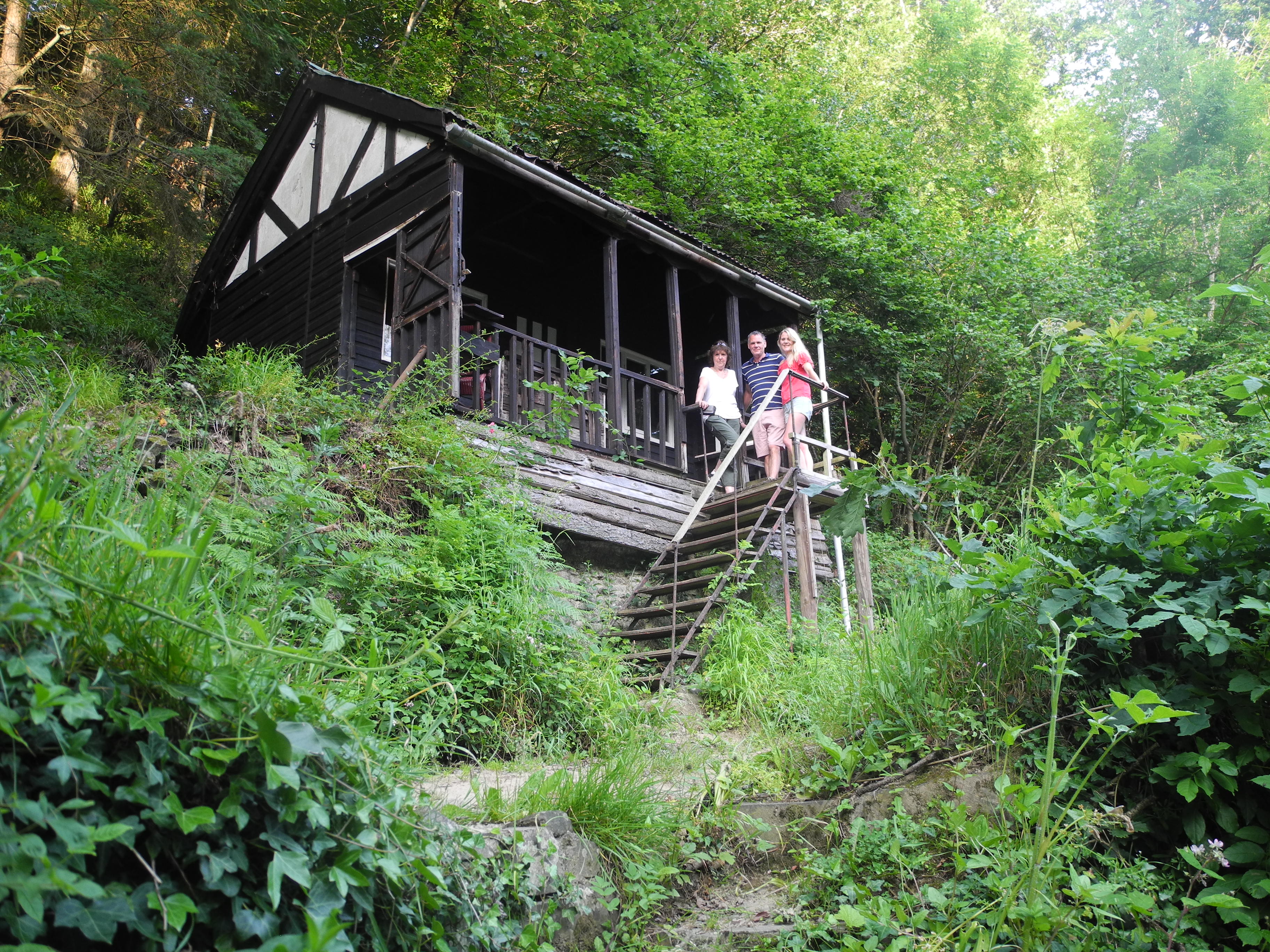
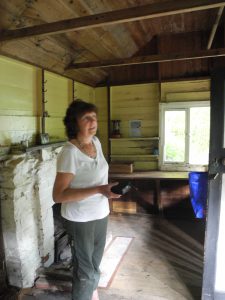
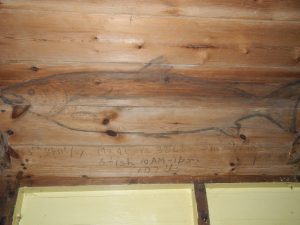
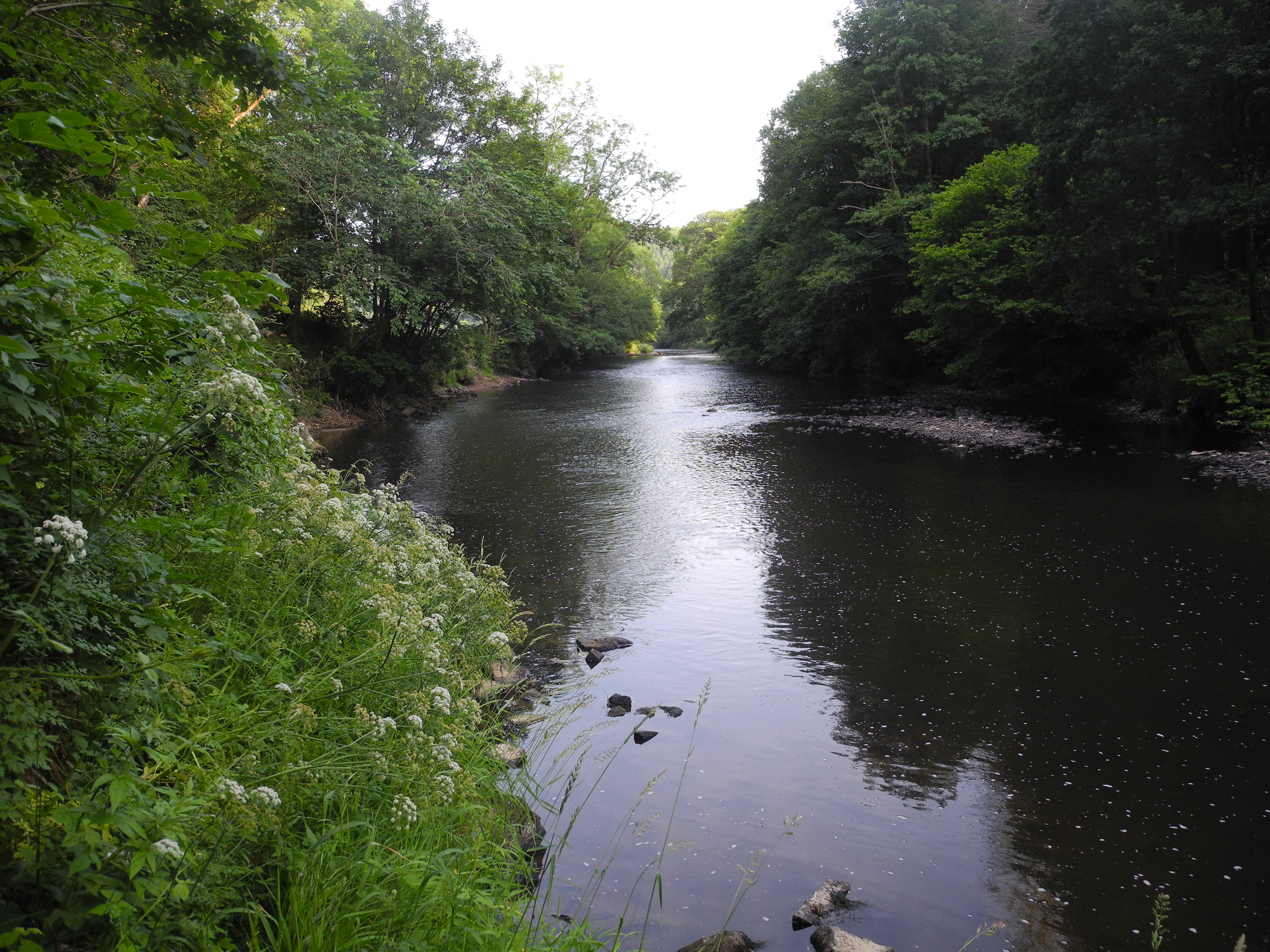

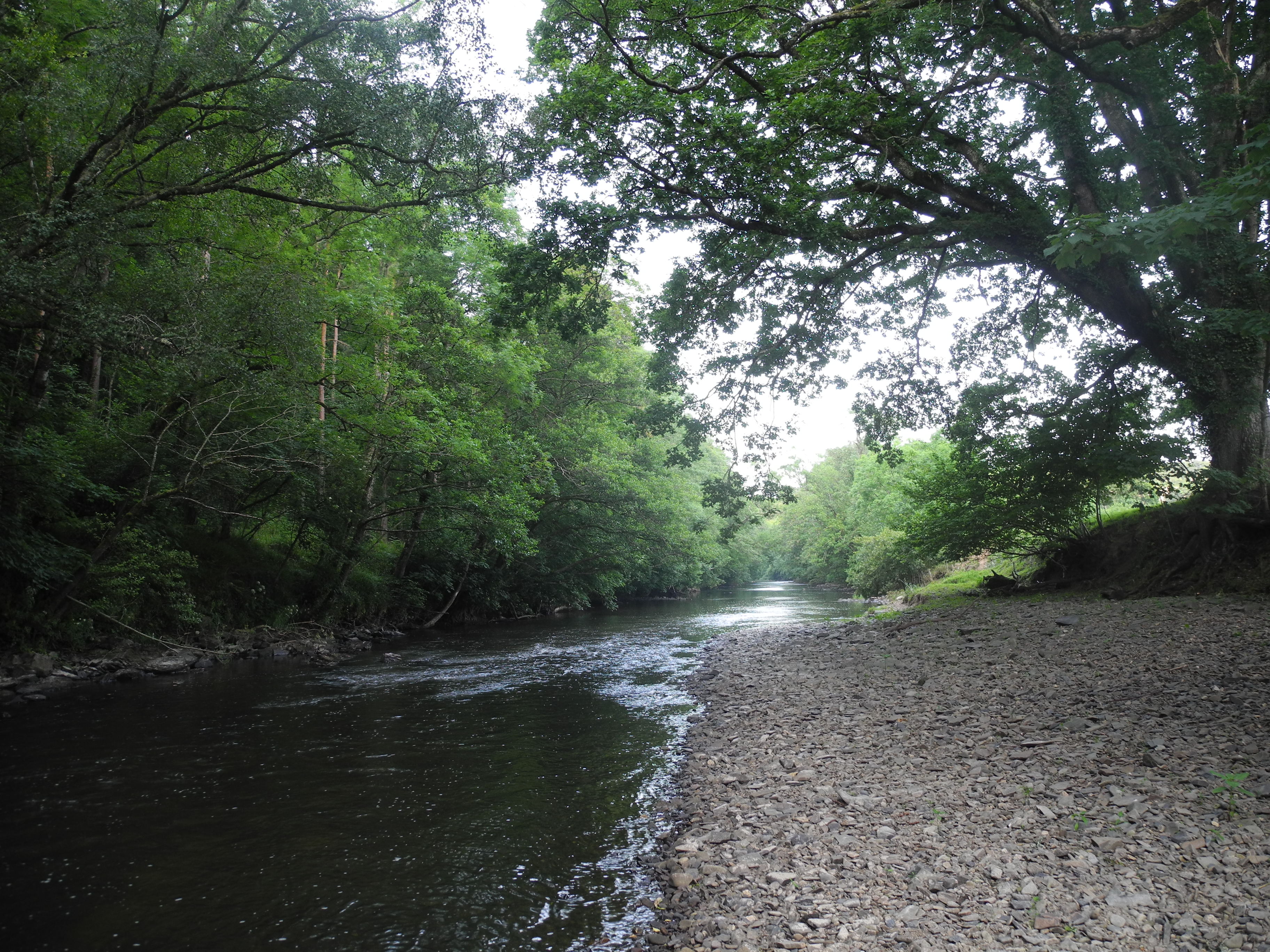
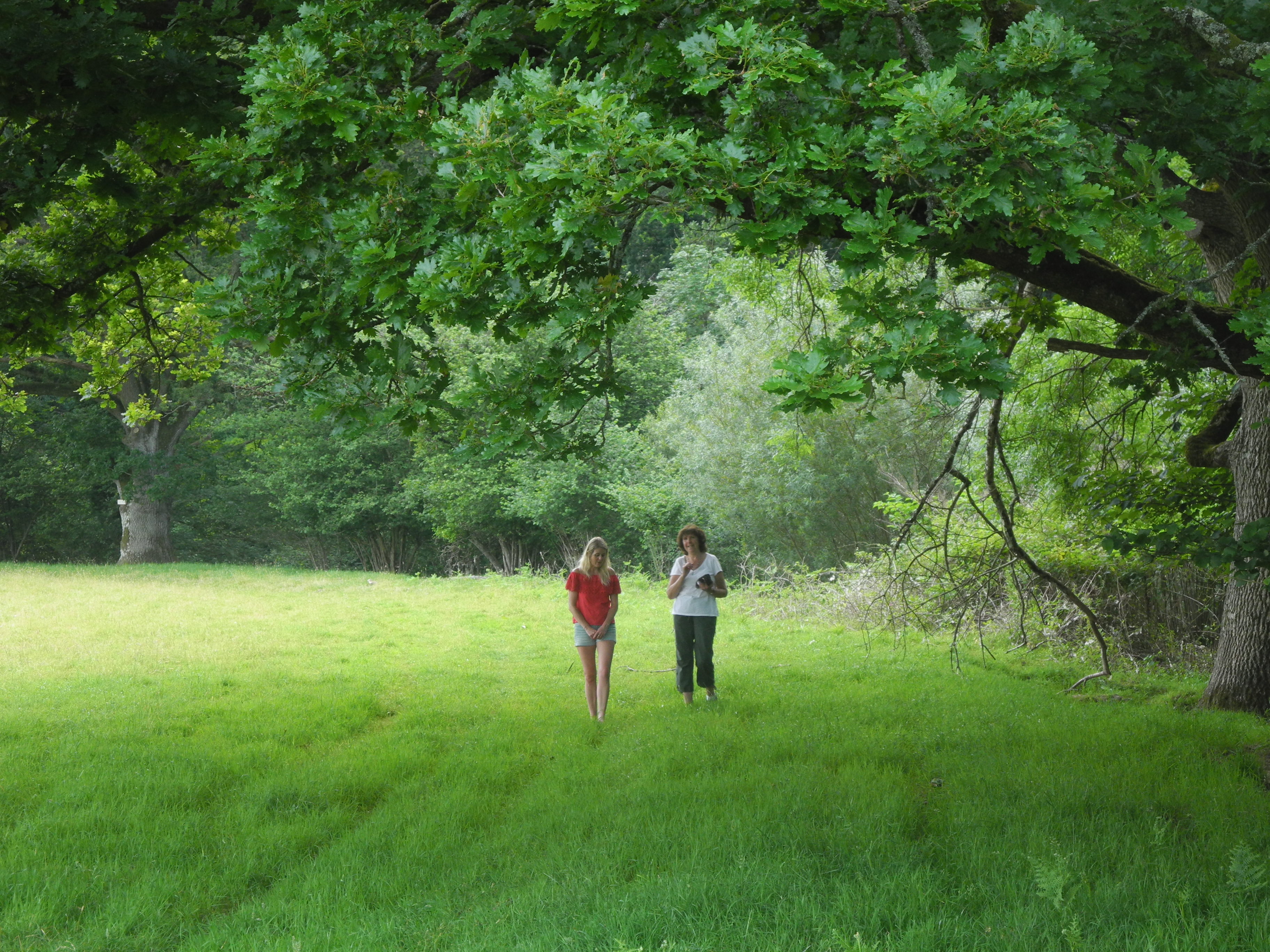
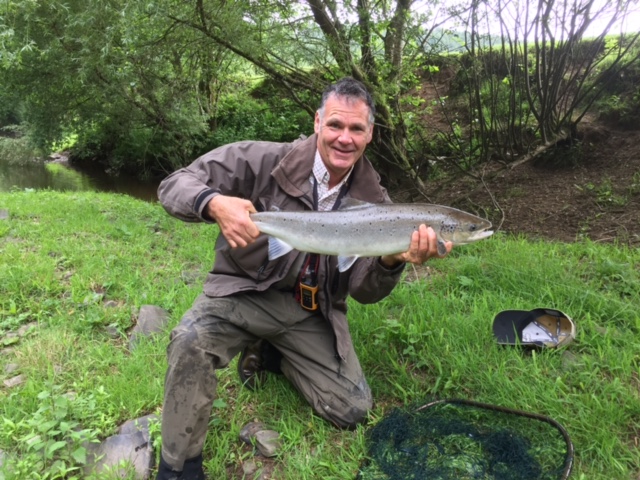
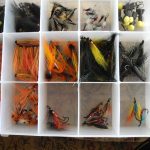 I will undoubtedly be able to put the flies I purchased during the visit. For they carry a selection of flies tied by those detained at HMS Prison in Exeter.
I will undoubtedly be able to put the flies I purchased during the visit. For they carry a selection of flies tied by those detained at HMS Prison in Exeter.



